We left Petra the next morning and continued our tour of Jordan heading south for several hours on the Kings Highway. The landscape changed dramatically again. We entered the Wadi Rum area situated in southern Jordan near the Saudi Arabia border. It is everything you’d expect of a quintessential desert. The wadi is very isolated and largely inhospitable, extreme hot in the summer and cold in the winter. It features varied desert landscape consisting of a range of narrow gorges, natural arches, towering cliffs, massive landslides and dramatic caverns. It is recognized globally as an iconic desert landscape. Putting it on the map, link
People have been living here for thousands of years, mostly struggling to survive as goat herders. Now there are only several thousand Bedouin nomads remaining in the area. They have successfully developed an “eco-adventure tourism”, which is now their main source of income. The area has never been developed, it has no real infrastructure, leaving it quite unspoiled. The Jordanian government has recognized the unique natural and cultural history of Wadi Rum and its importance to tourism for the local economy. It was declared a protected area in 1998. Now over 185,000 acres are part of the Wadi Rum Protected Area under the UNESCO umbrella. One of the interesting features is the findings of 25,000 rock carvings with 20,000 inscription that can trace the evolution of human thought and the early development of the alphabet going back 12,000 years from the people who lived in this harsh environment.
The area is also know from the writings of T.E. Lawrence who passed through Wadi Rum several time during the Arab Revolt of 1971-1918 against the Ottoman Empire.
There are numerous camps scattered in the area that provide a number of activities. Ranging from guided jeep tours, camel and house back riding, ballooning, to visiting Nabatean sites, places where T.E. Lawrence stayed, to rock climbing or to just watching the sunset.
After arriving in the Wadi Rum area, we turned off the main road and drove for miles into the desert. After passing through a small village we stopped at an empty parking lot where we waited for a jeep to pick us up. The open jeep continued to drive now off road through the desert to the camp site. We arrived early afternoon and while waiting for other guests to arrive M.E. and I took a walk up a small ridge overlooking the camp.
At 4:00 we hopped back in the open jeep and went for a several hour tour of this incredible area that ended with climbing another rock grouping to sit and watch the sunset. We returned to the camp and enjoyed a traditional Bedouin meal. The specialty is chicken and goat roasted under the desert sand. Coals or wood are placed in the bottom of a drum that is burned in the sand. Several layers of meat and vegetables are lowered into the drum. It is then covered with a lid, foil, layers of cloth and finally buried with sand where it smolders for several hours. We were joined by a group of men from Aqaba a Jordanian town on the Red Sea about an hour drives away. After dinner we were entertained by musicians while the man sang and danced around the camp fire. After the men left we walked out of the camp, up a sand dune to look at the stars. A most amazing sight. I think we saw a million stars!
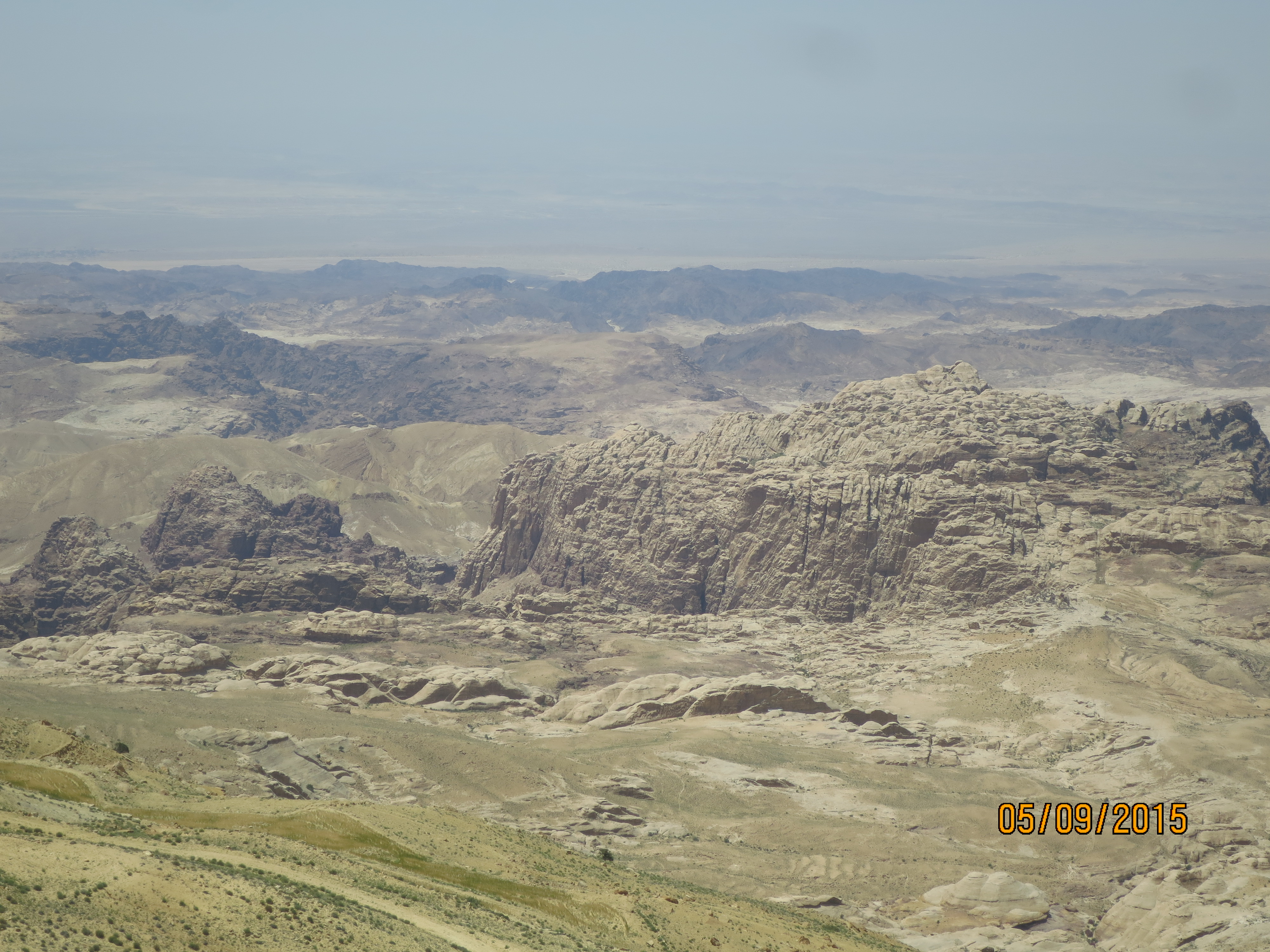
view from the road as we left Petra, we traveled along a ridge for about an hour with these incredible views, in the background is the valley that separates Jordan and Israel
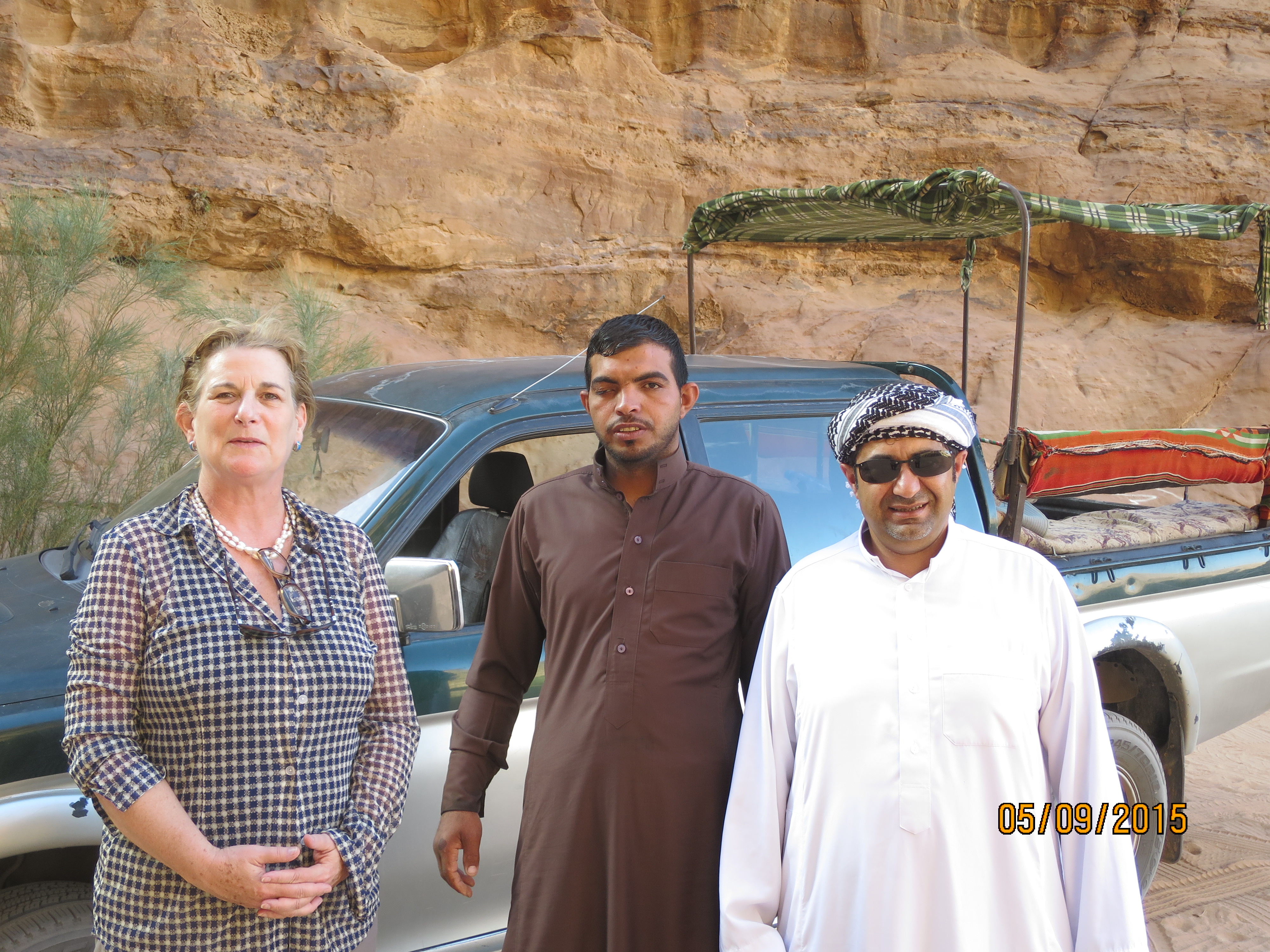
I had to laugh, in the middle the jeep driver with one eye and our driver/guide for the week in Jordan

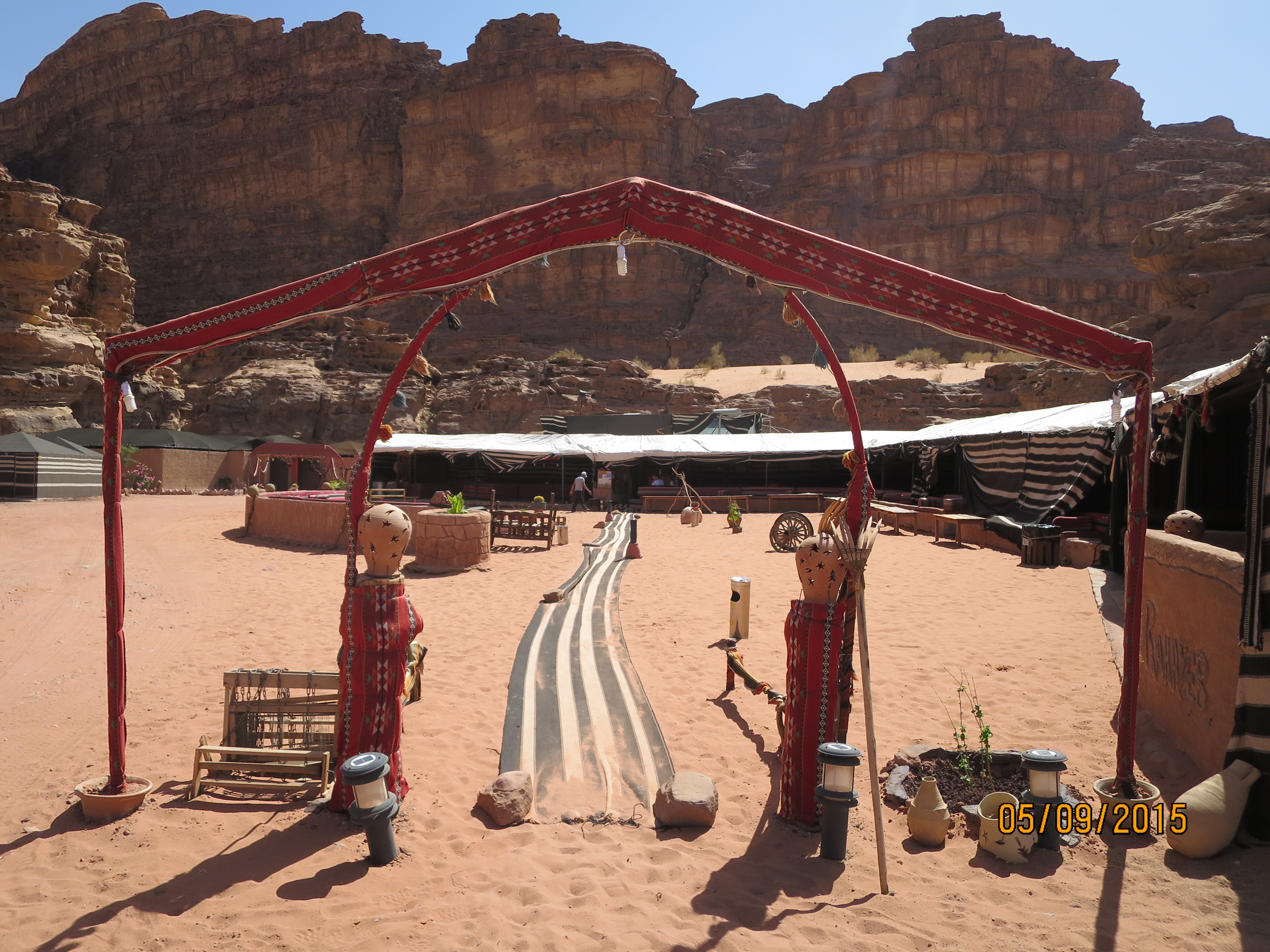
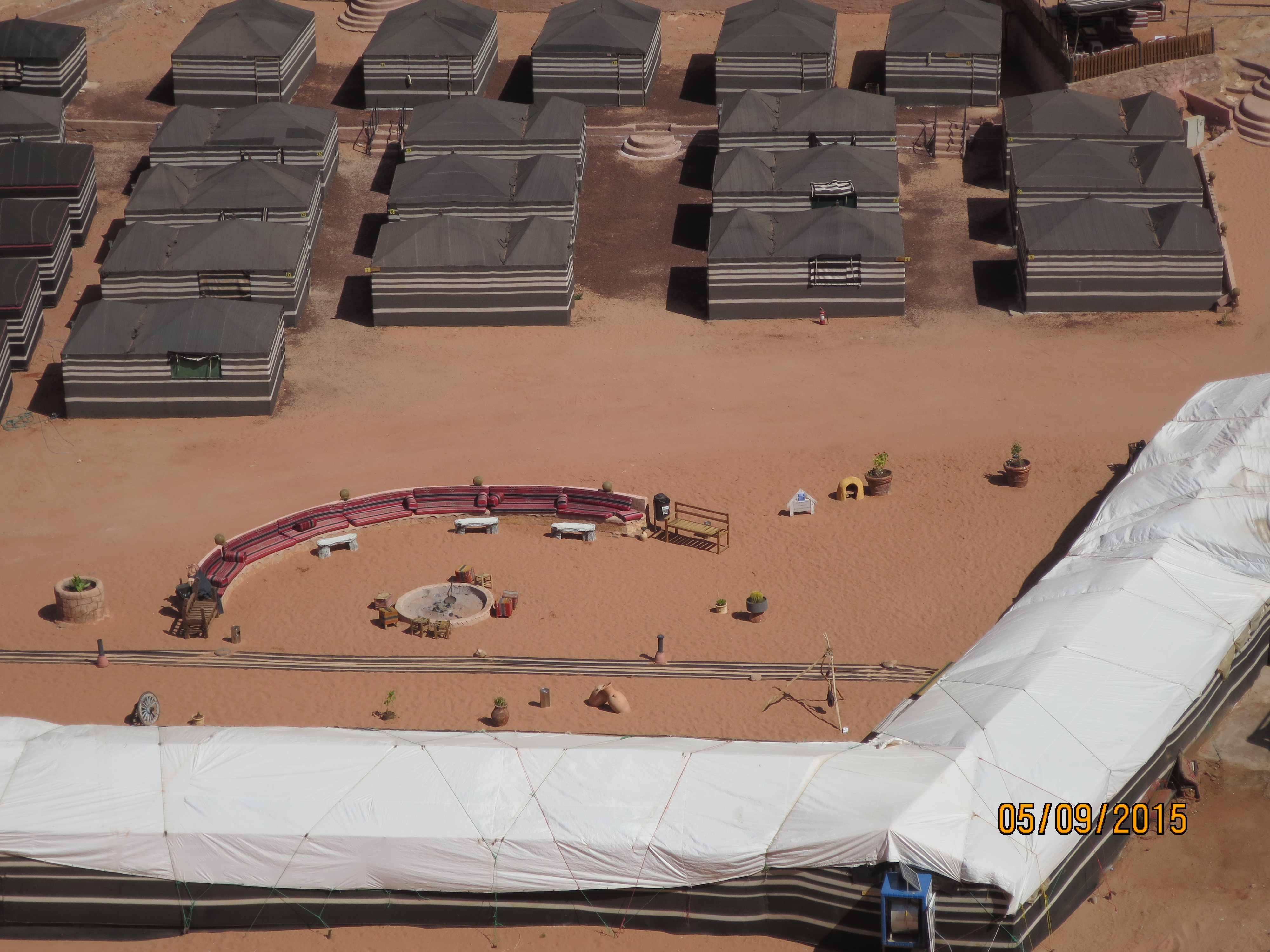
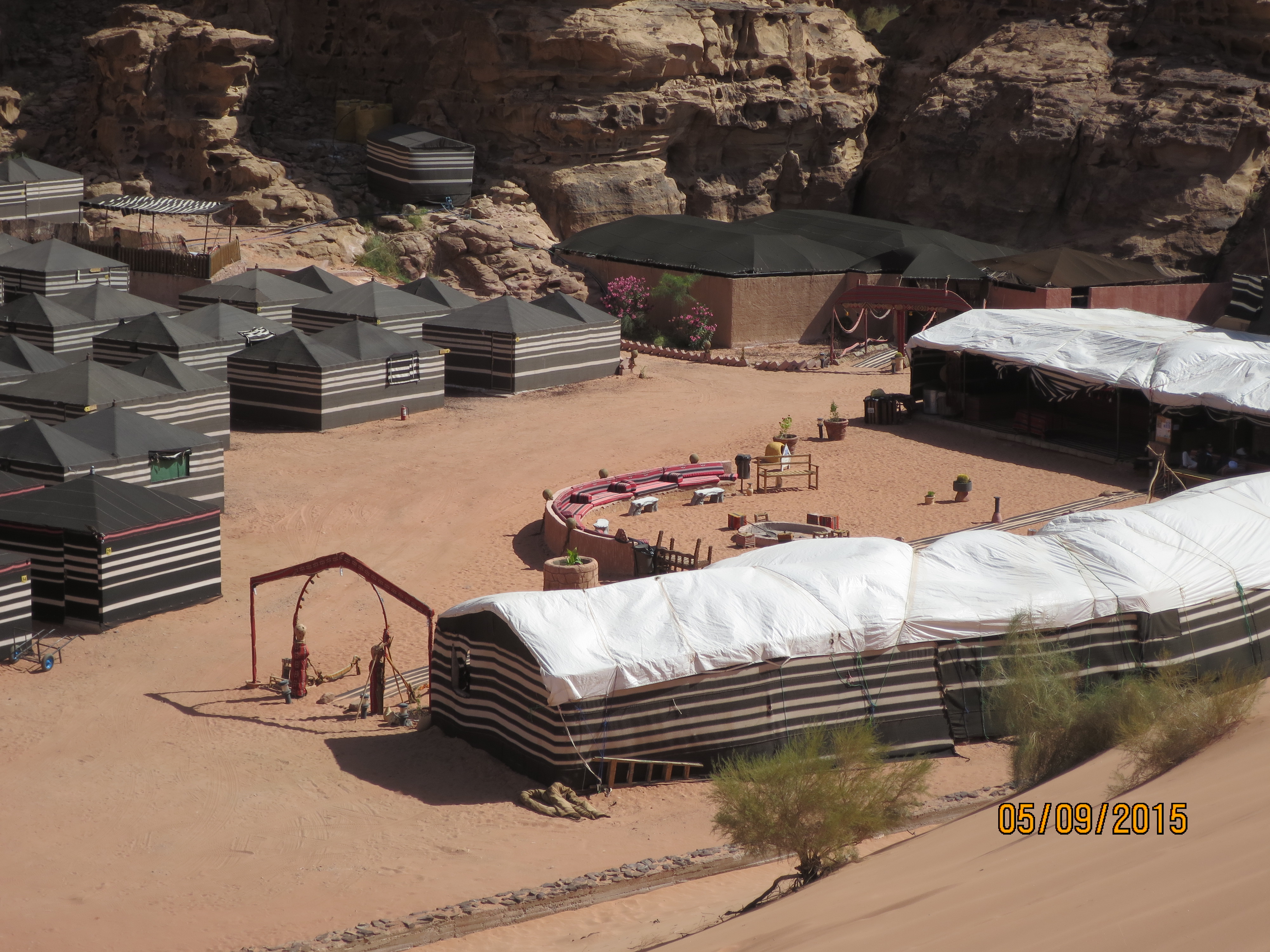
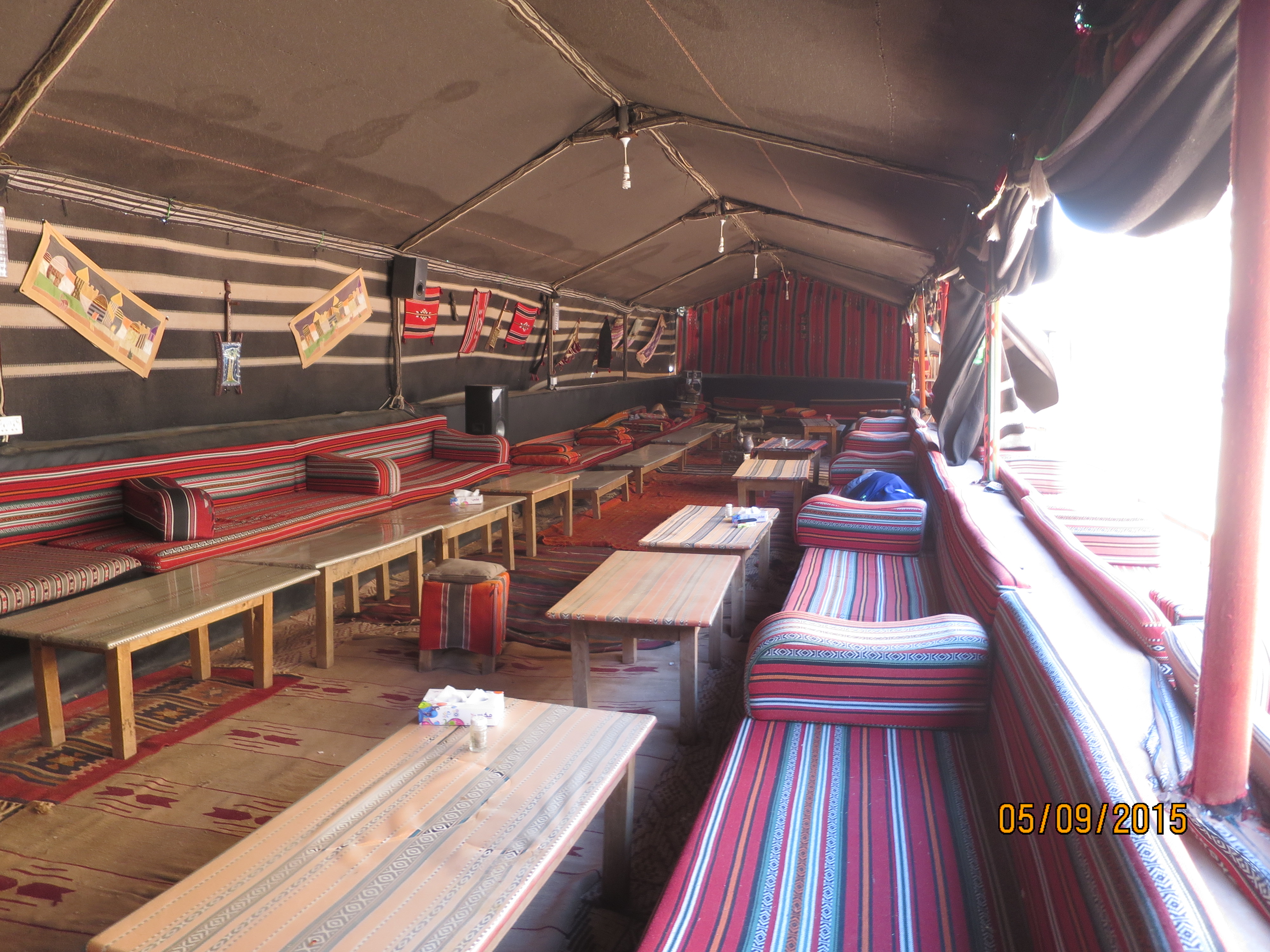
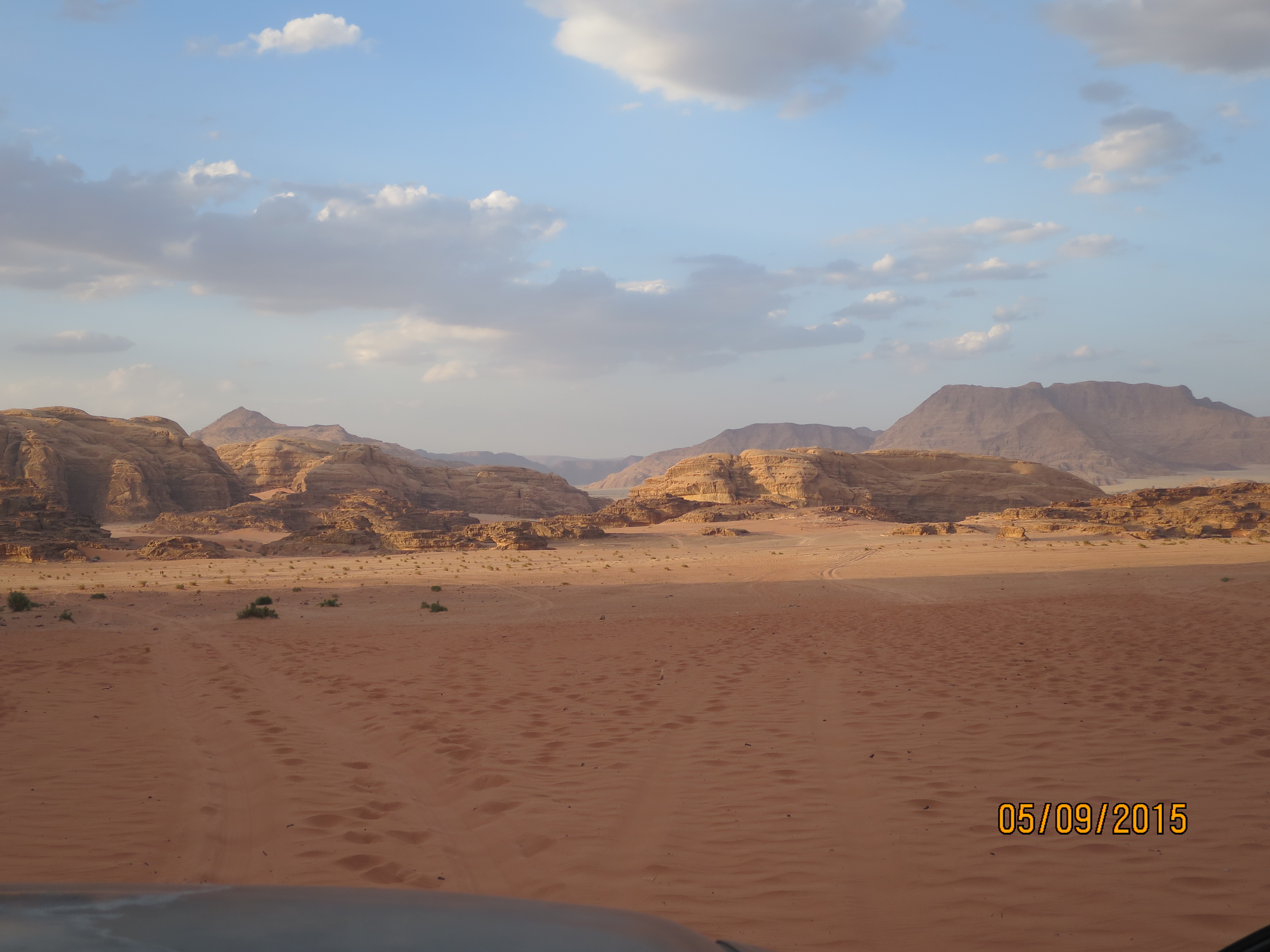
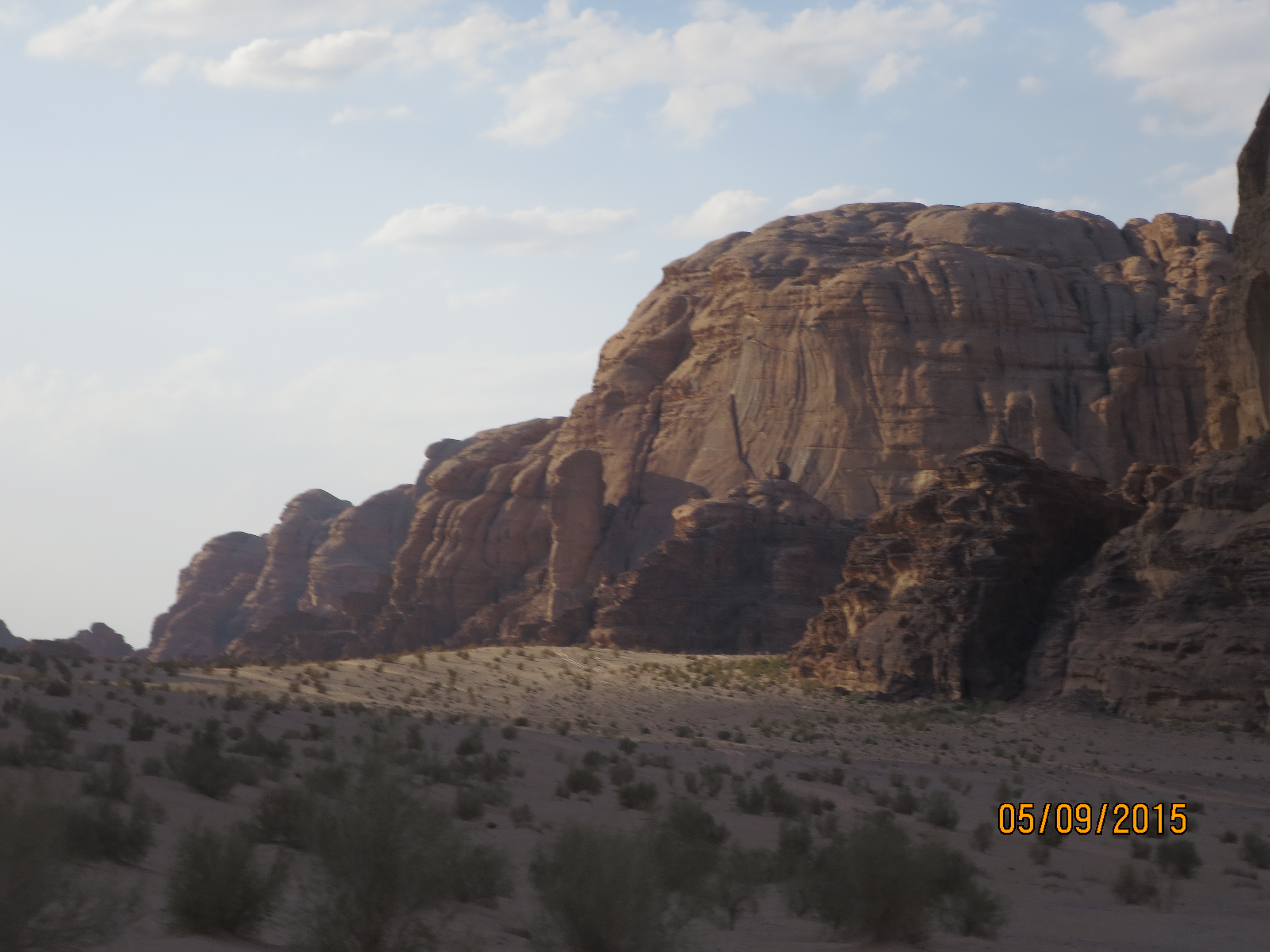
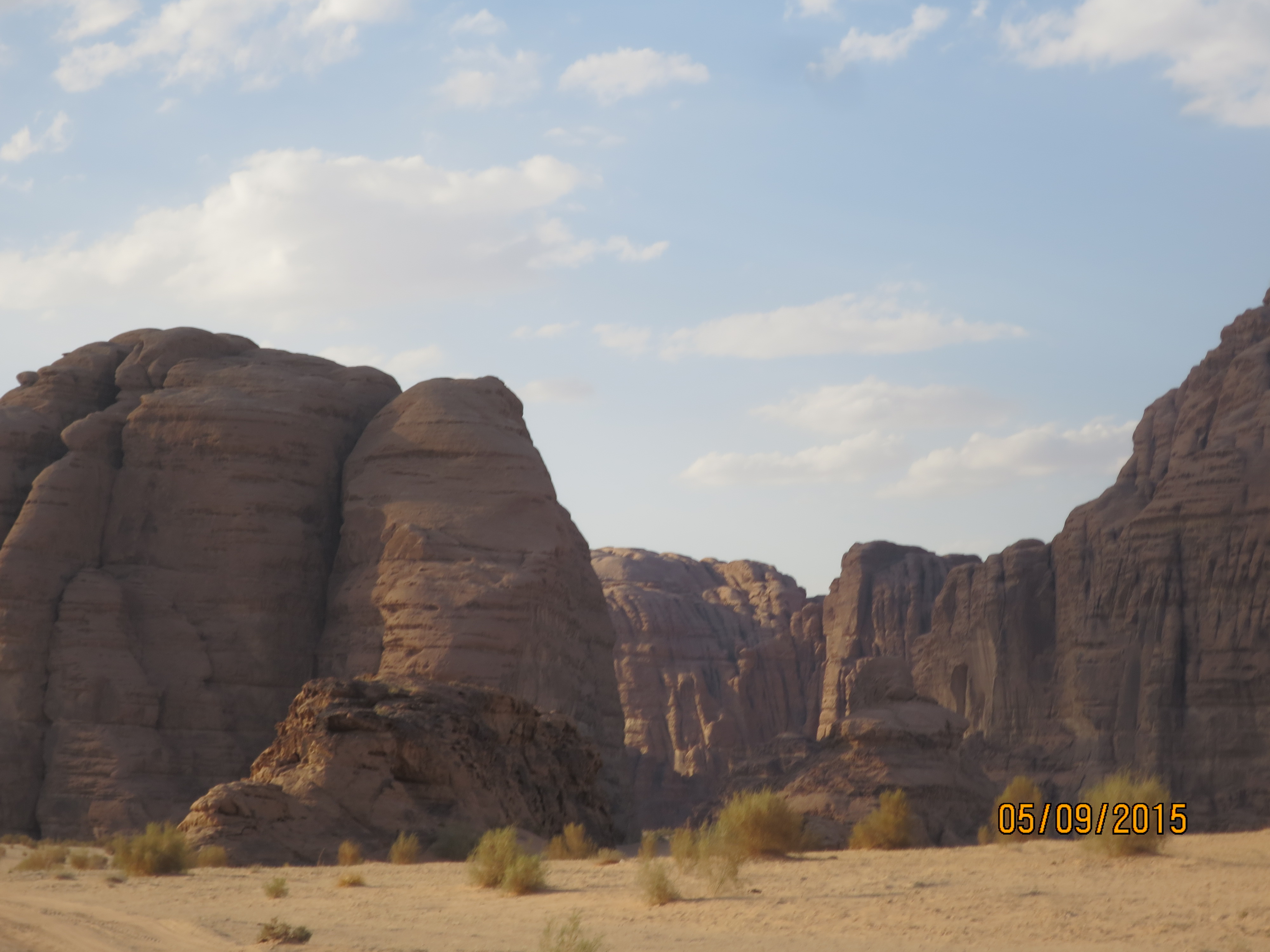
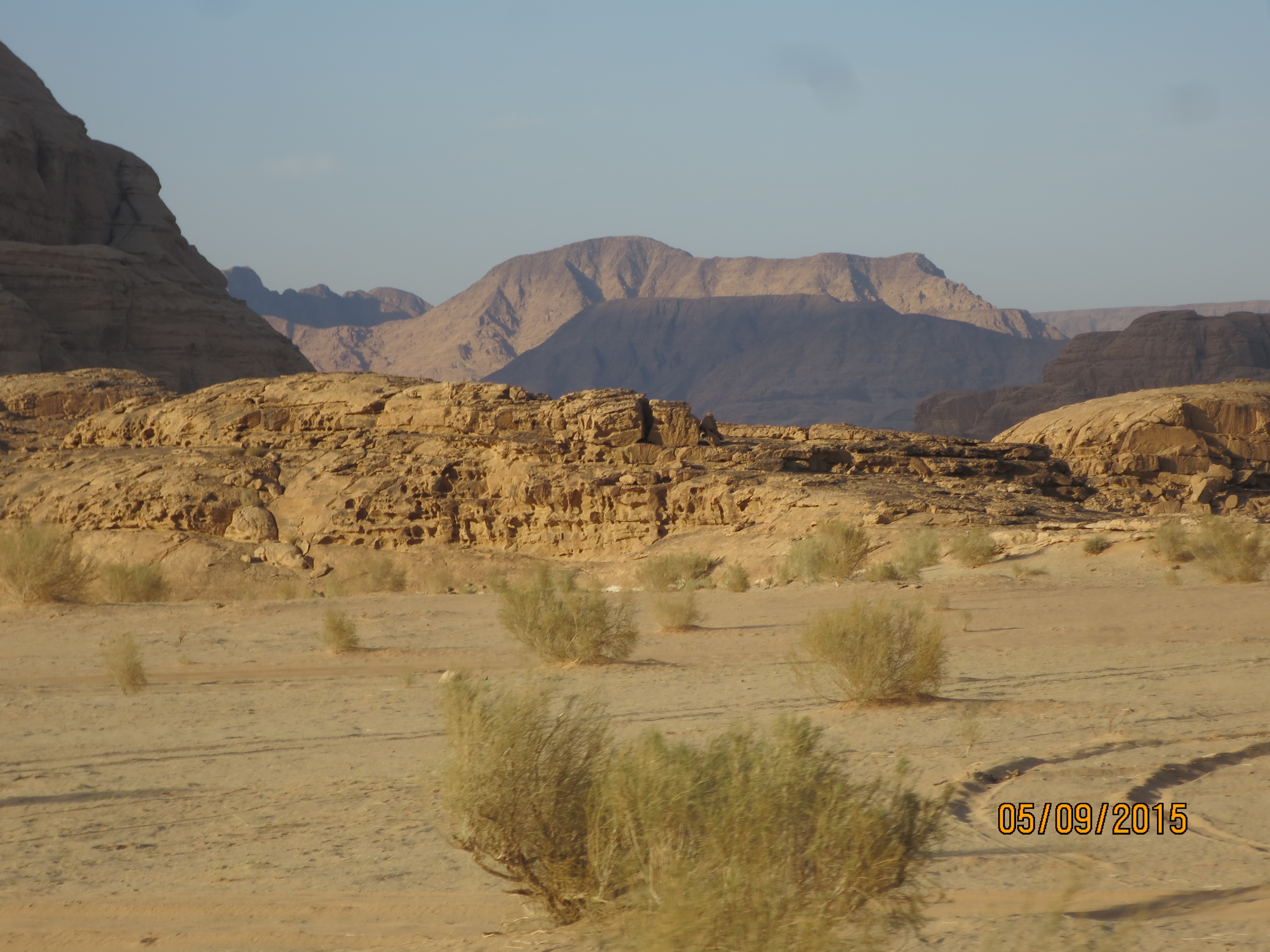
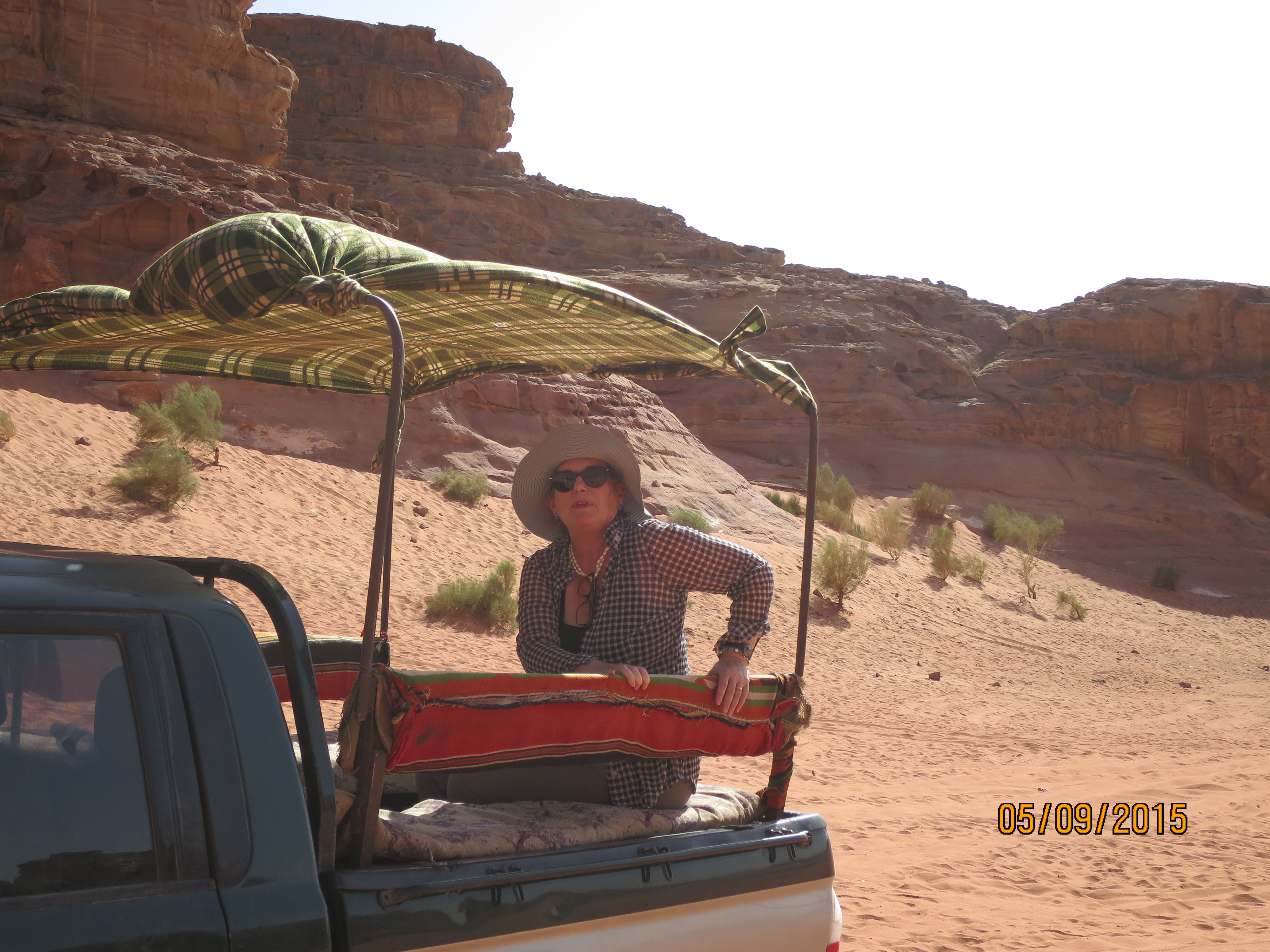
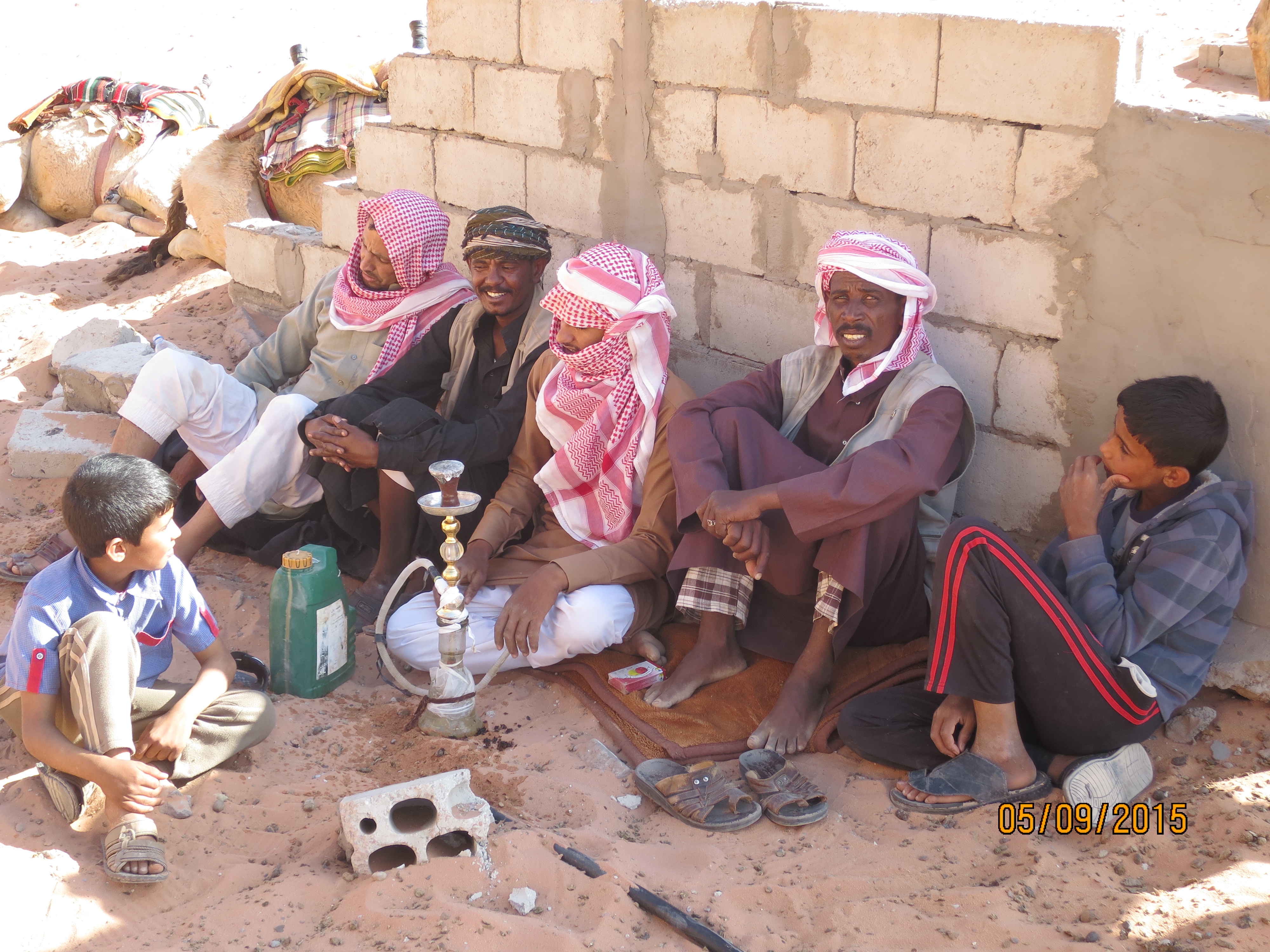
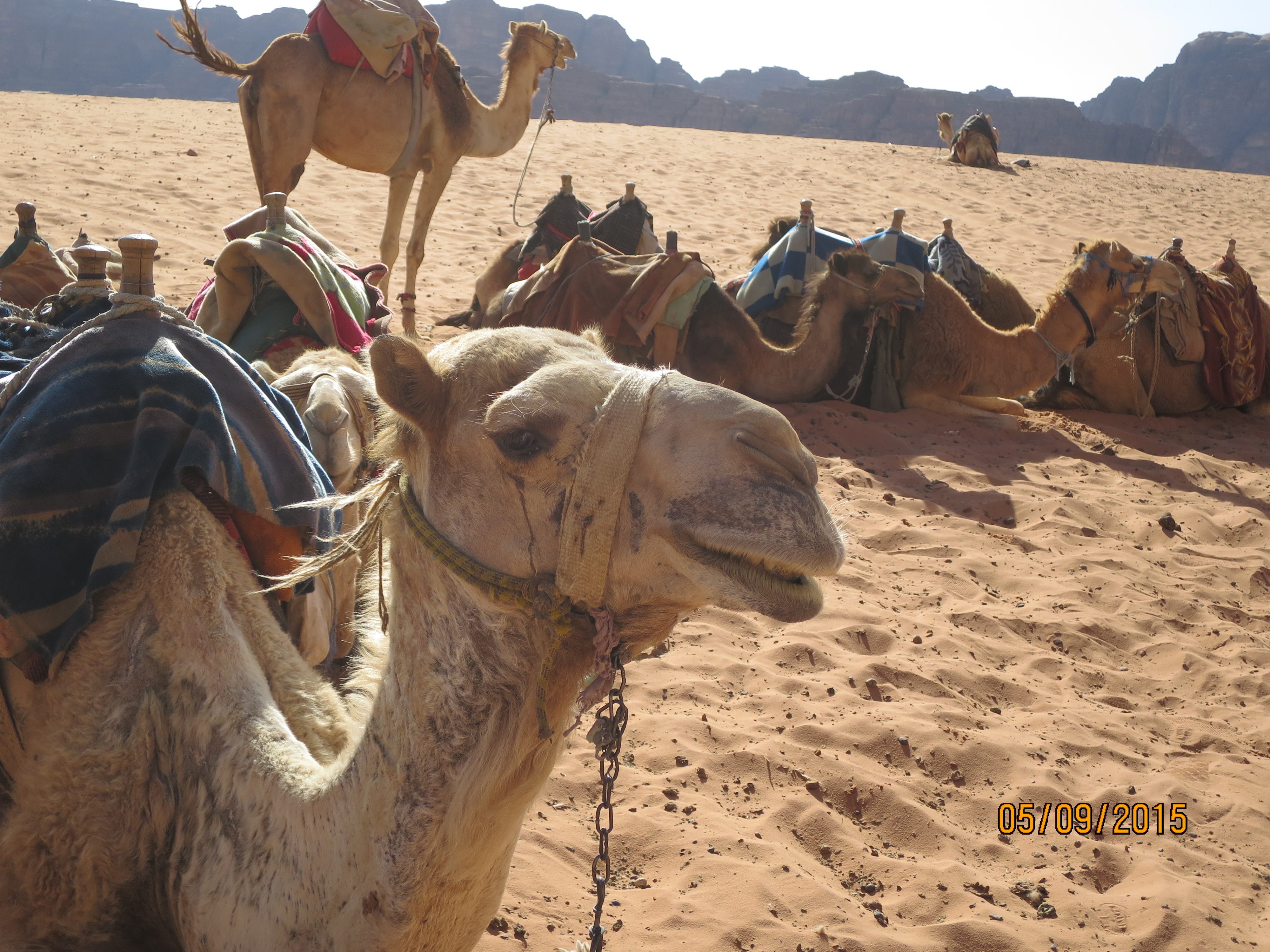
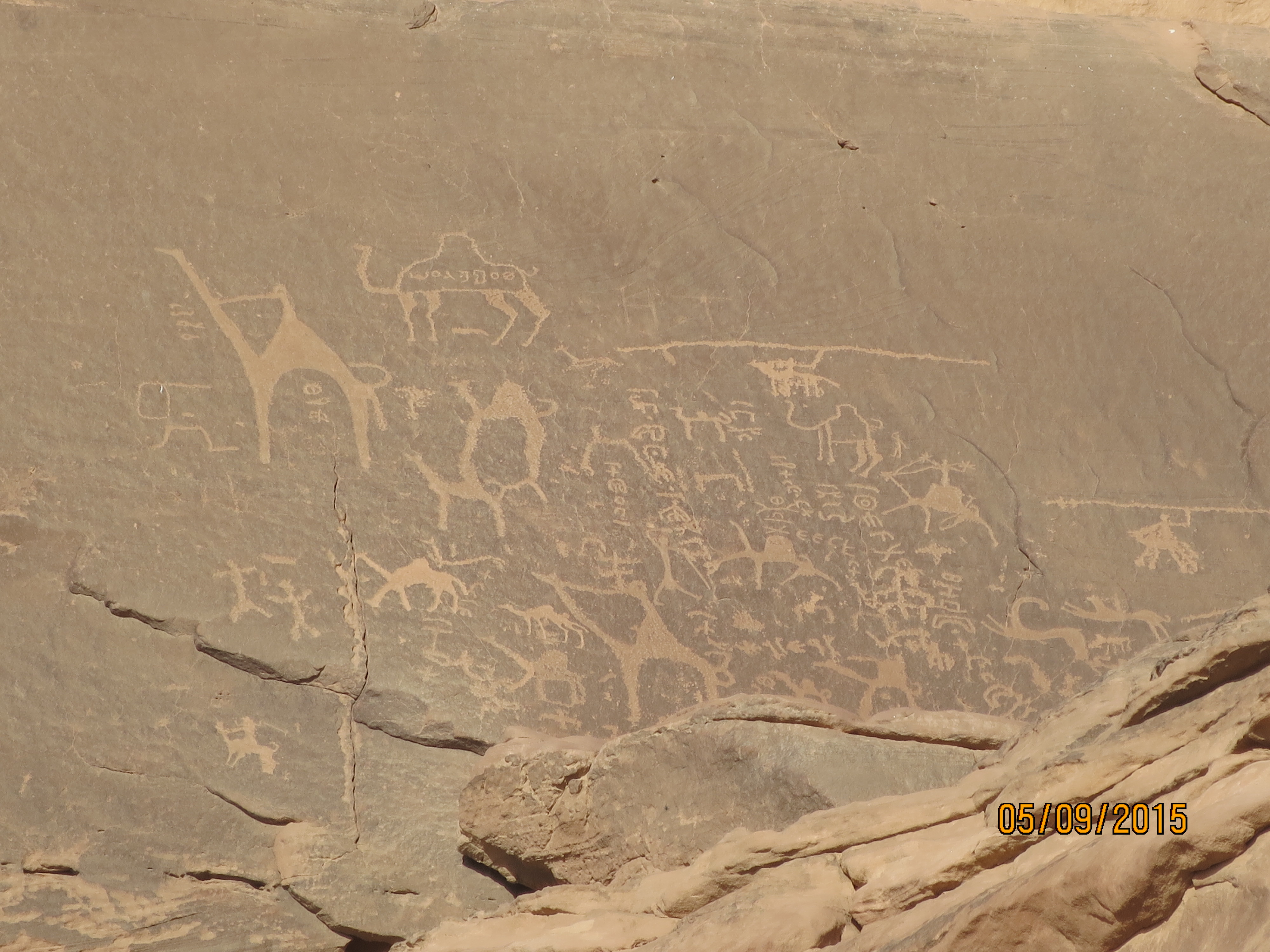
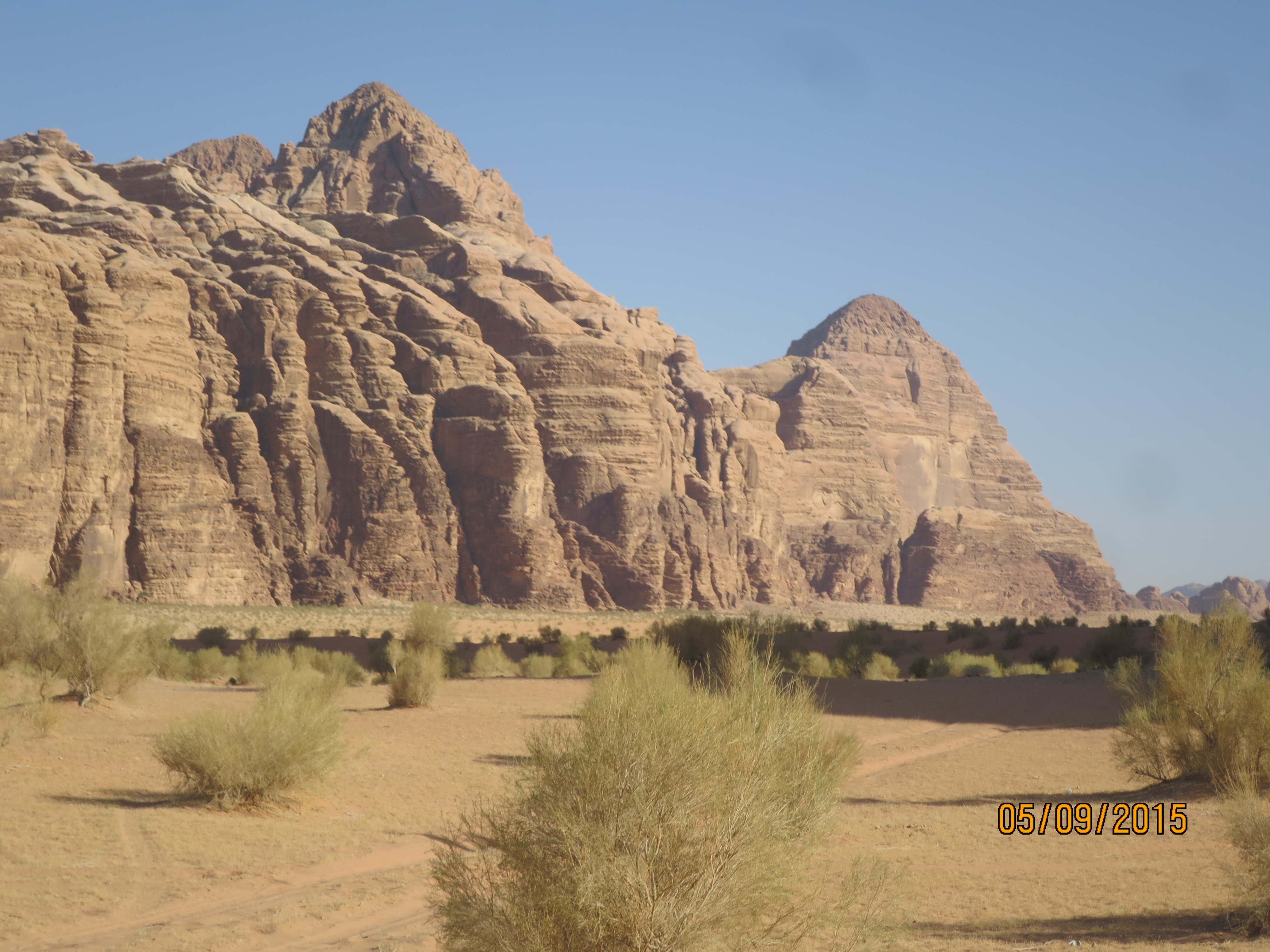
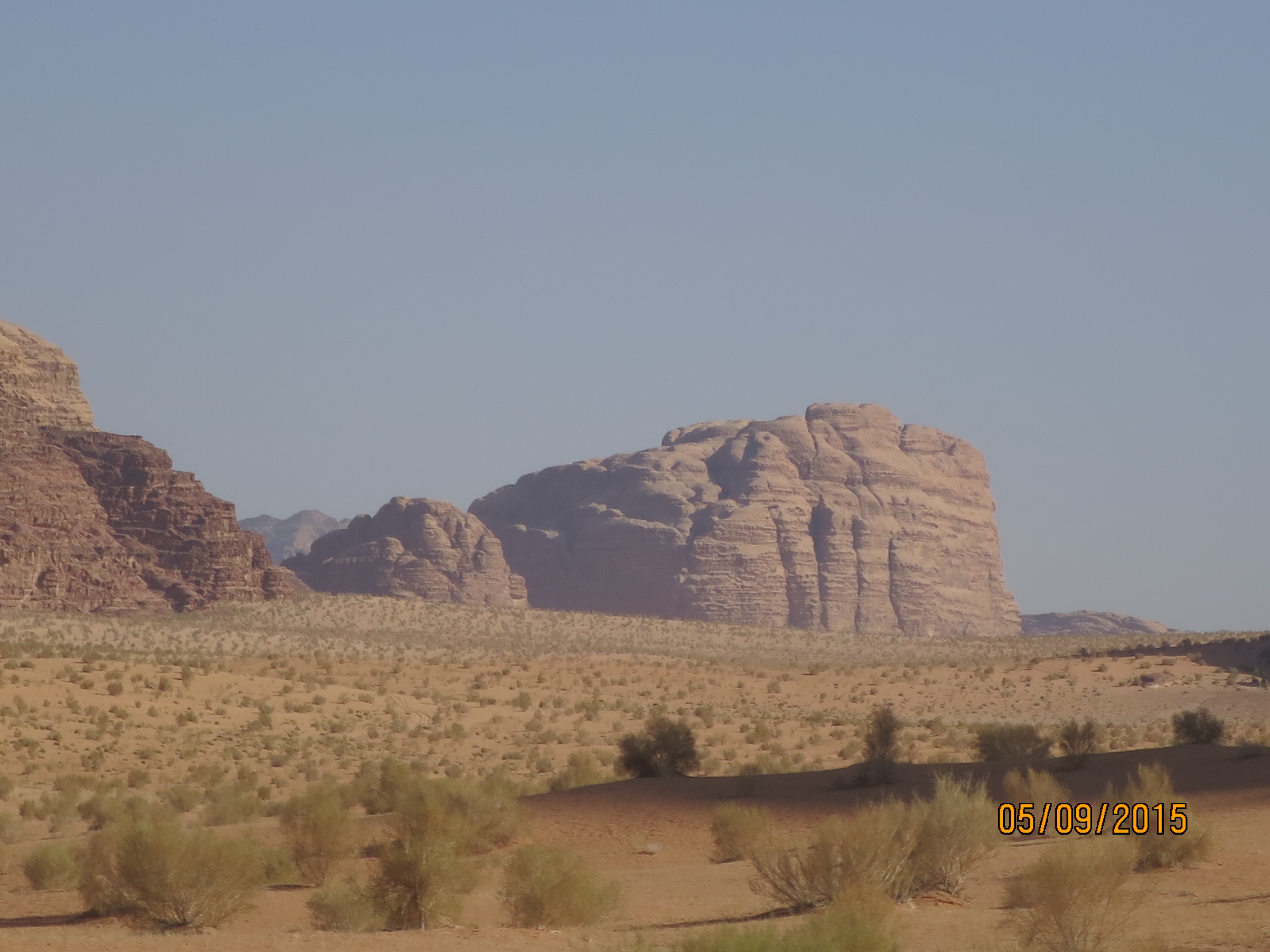
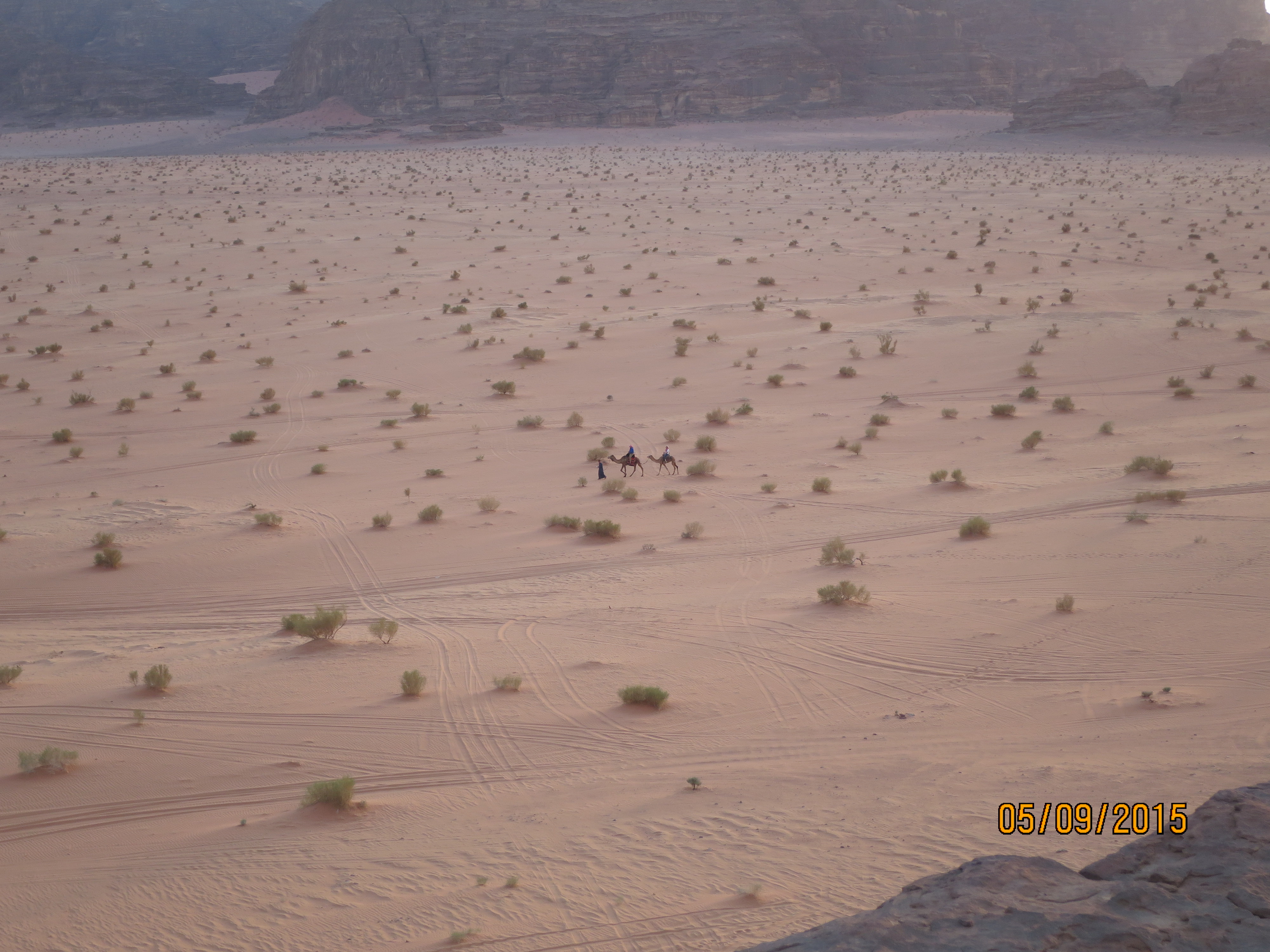
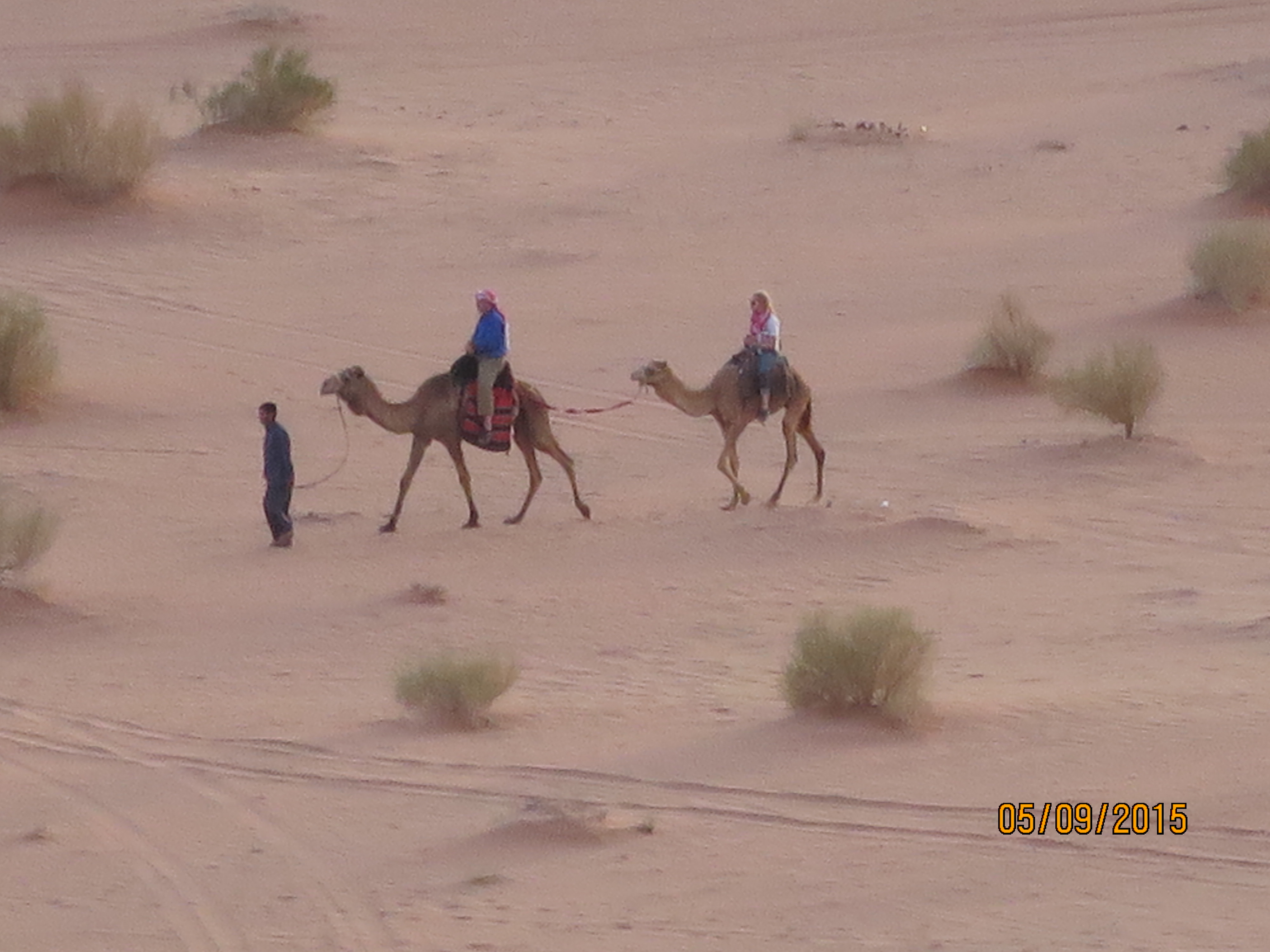
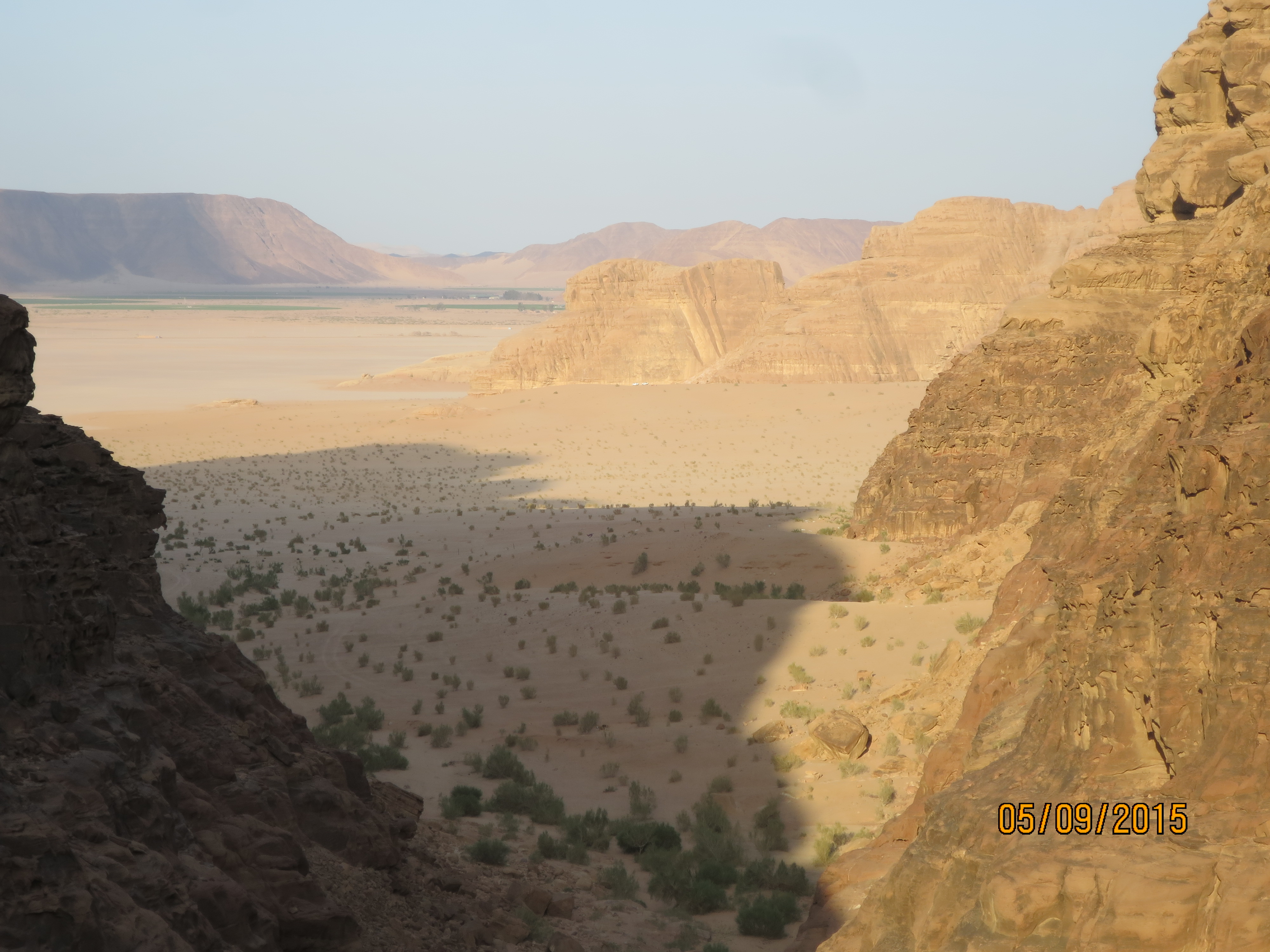
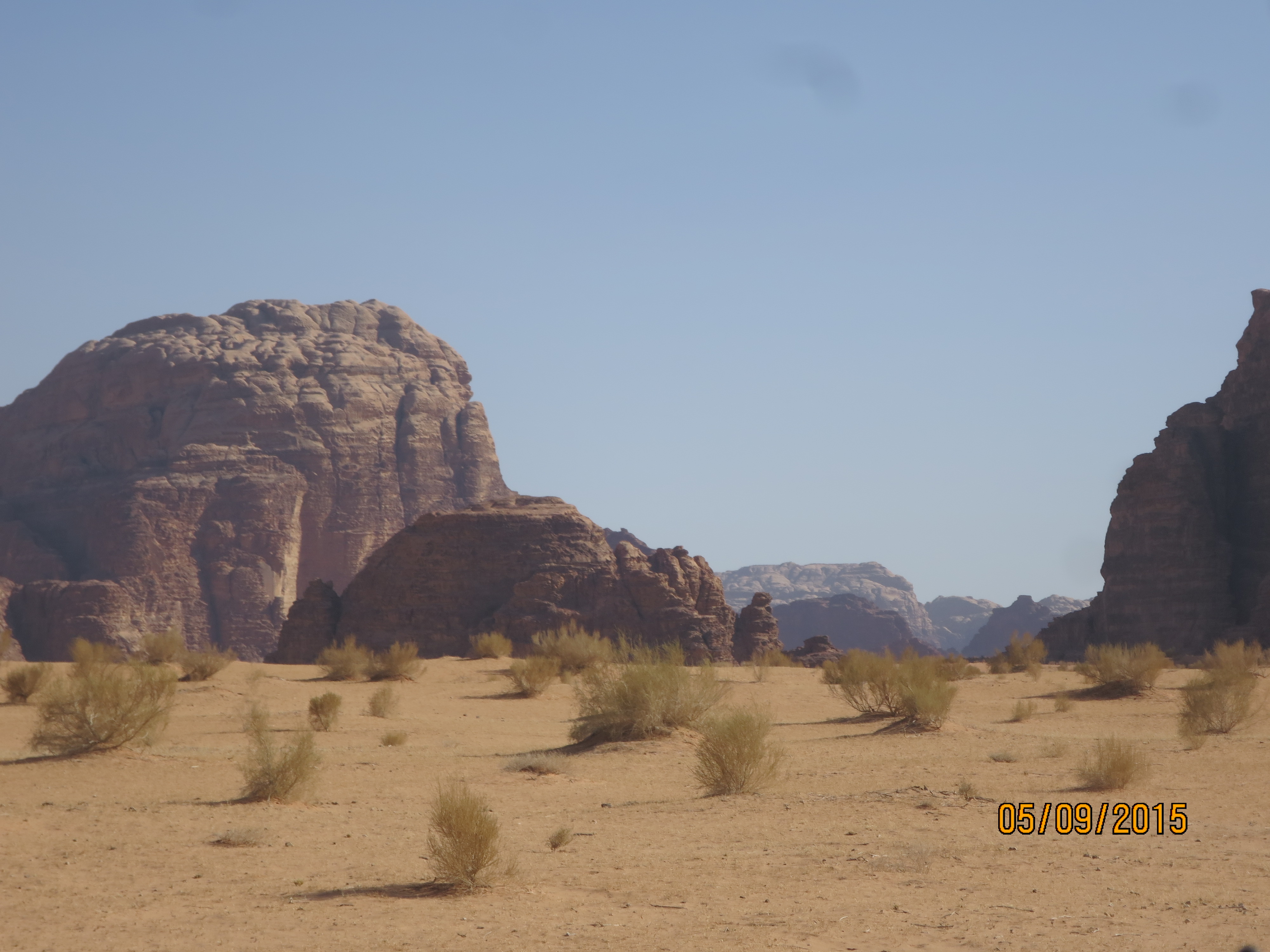
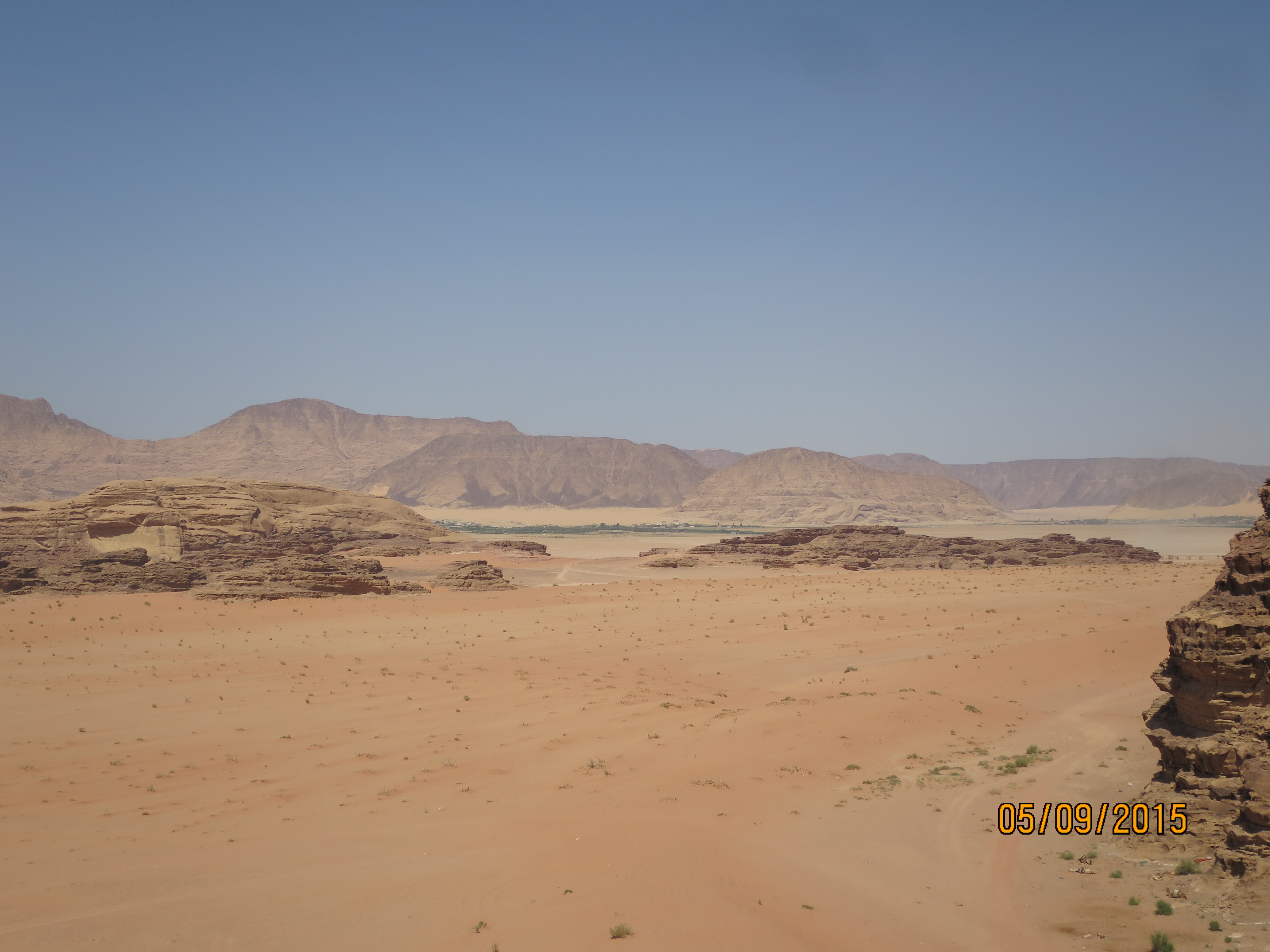
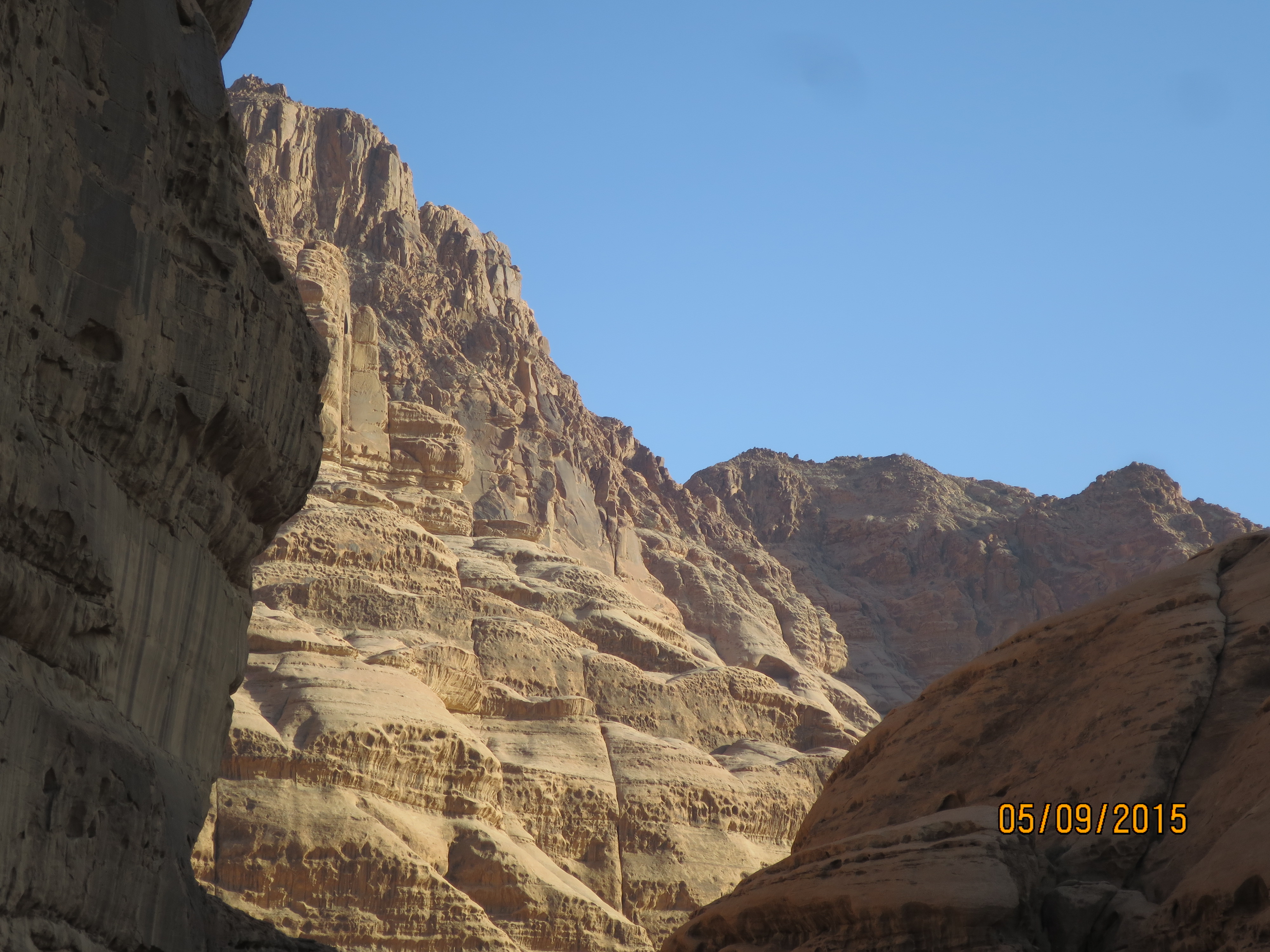
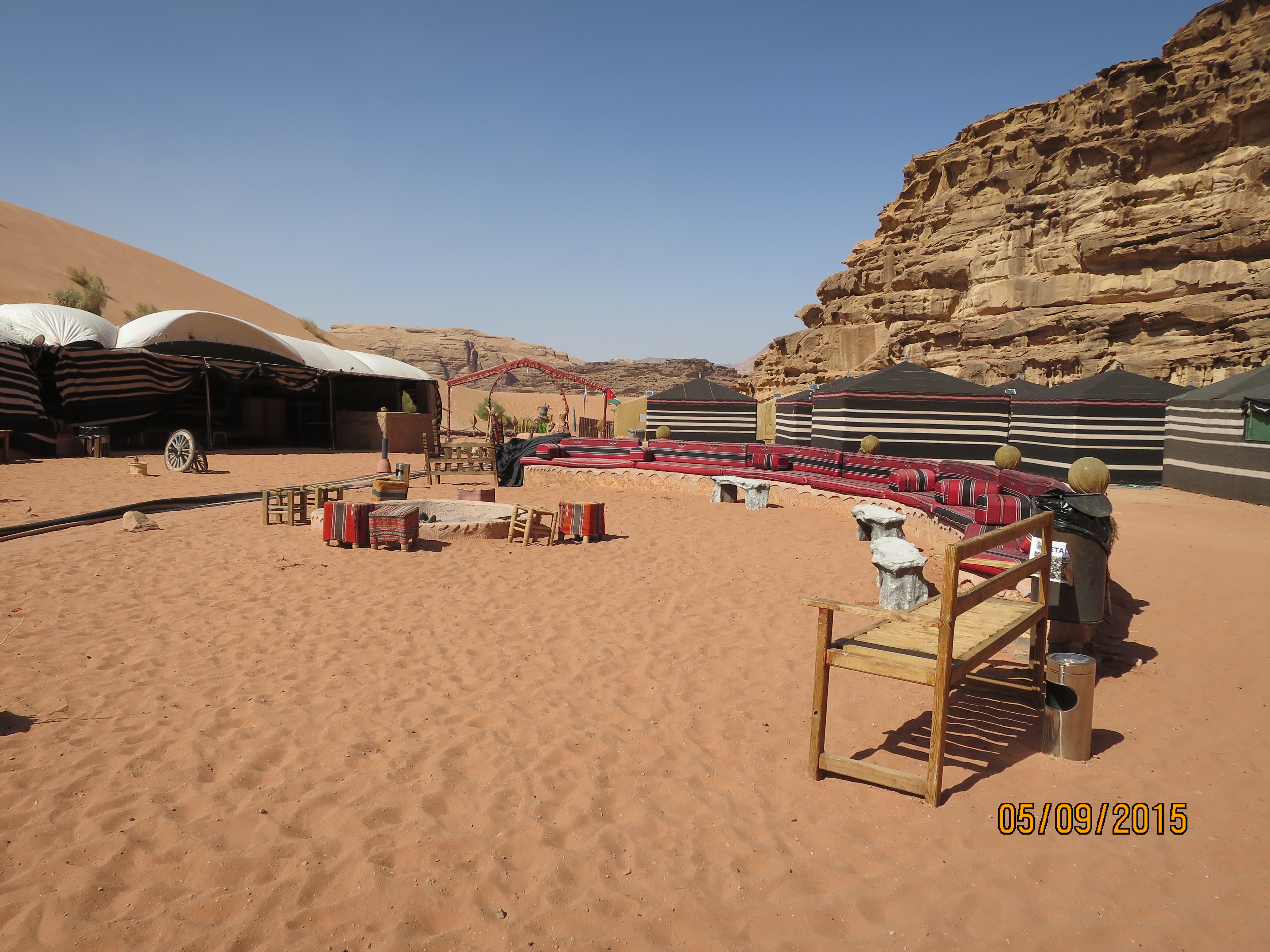
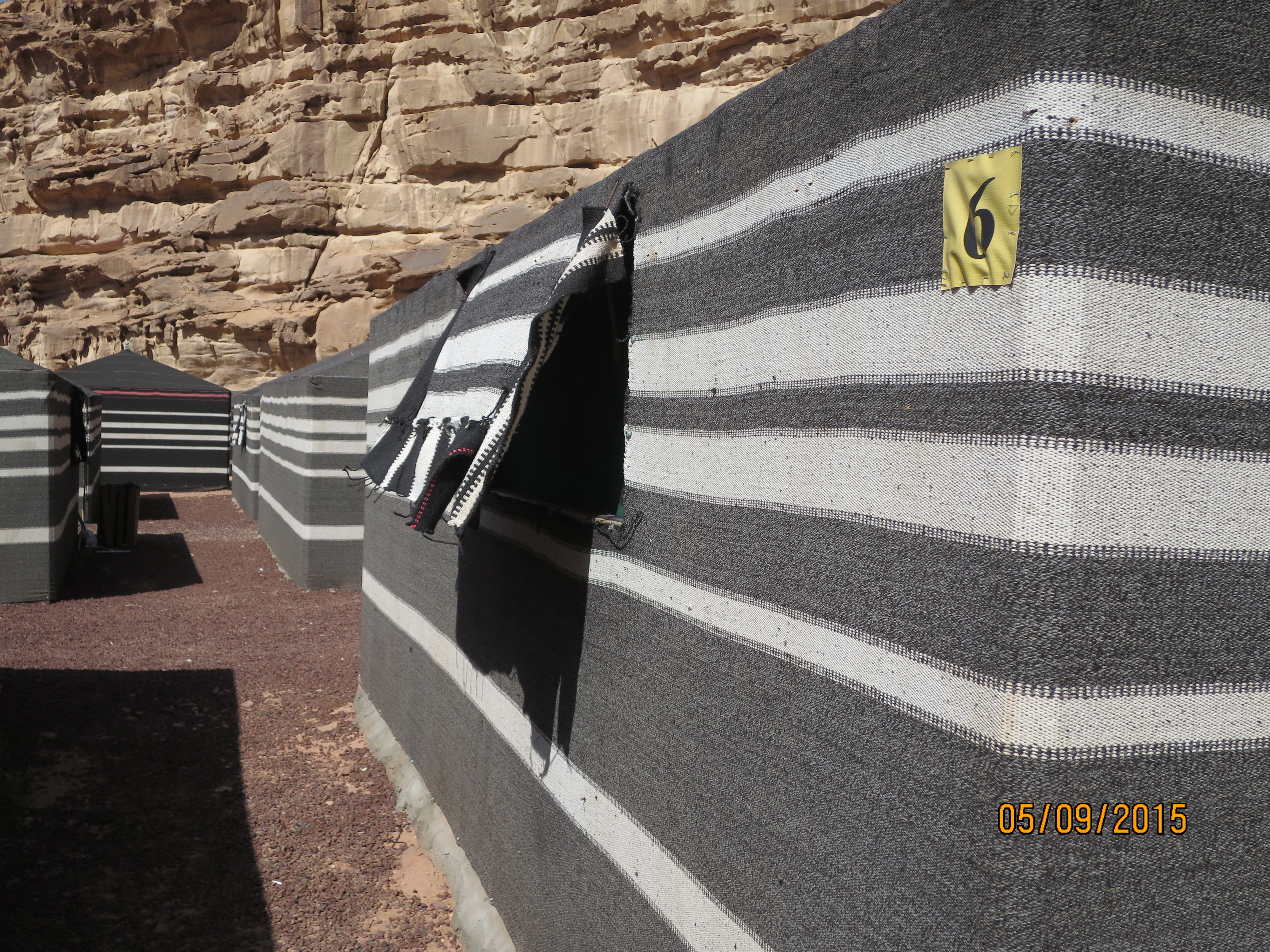
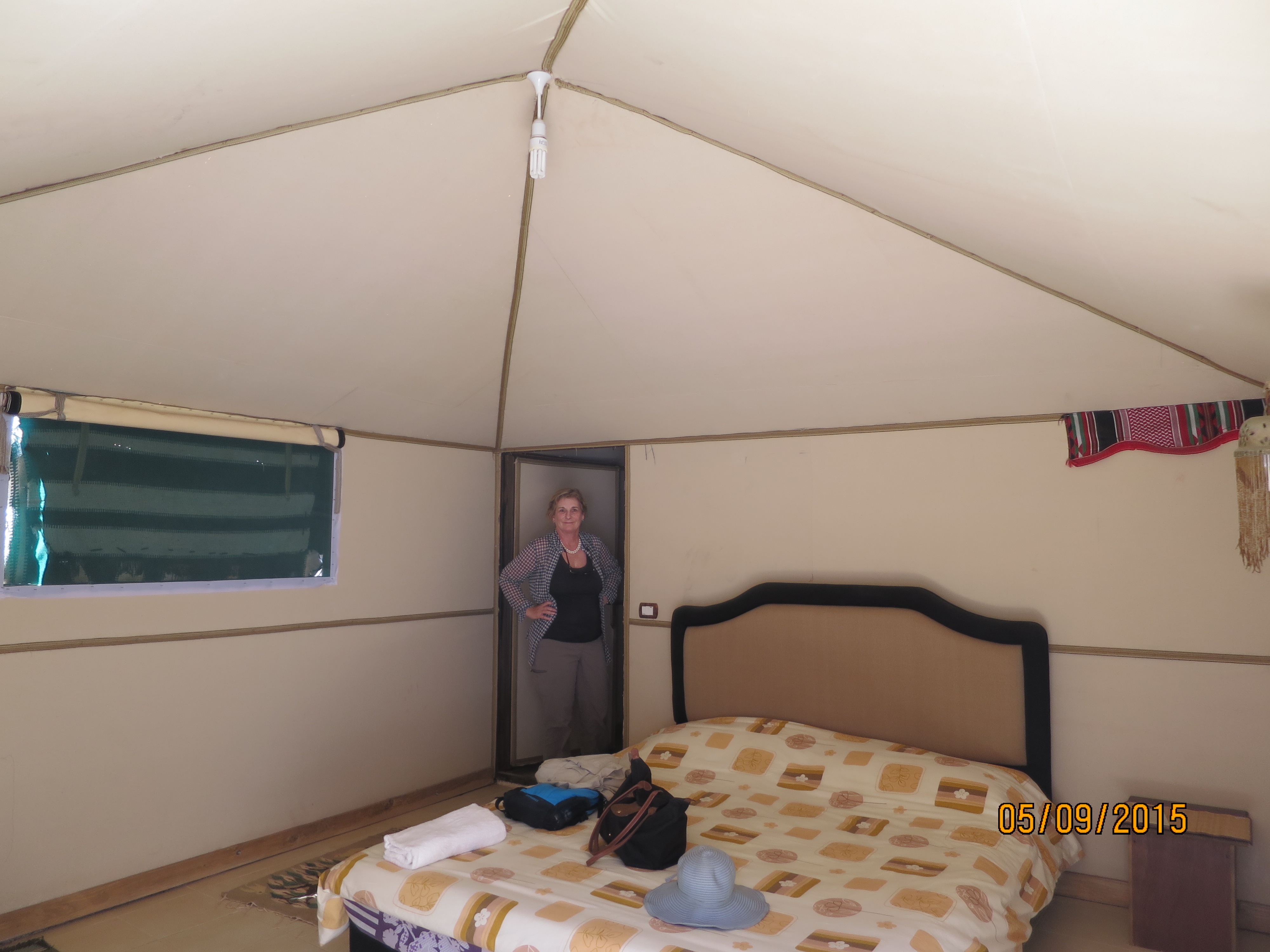
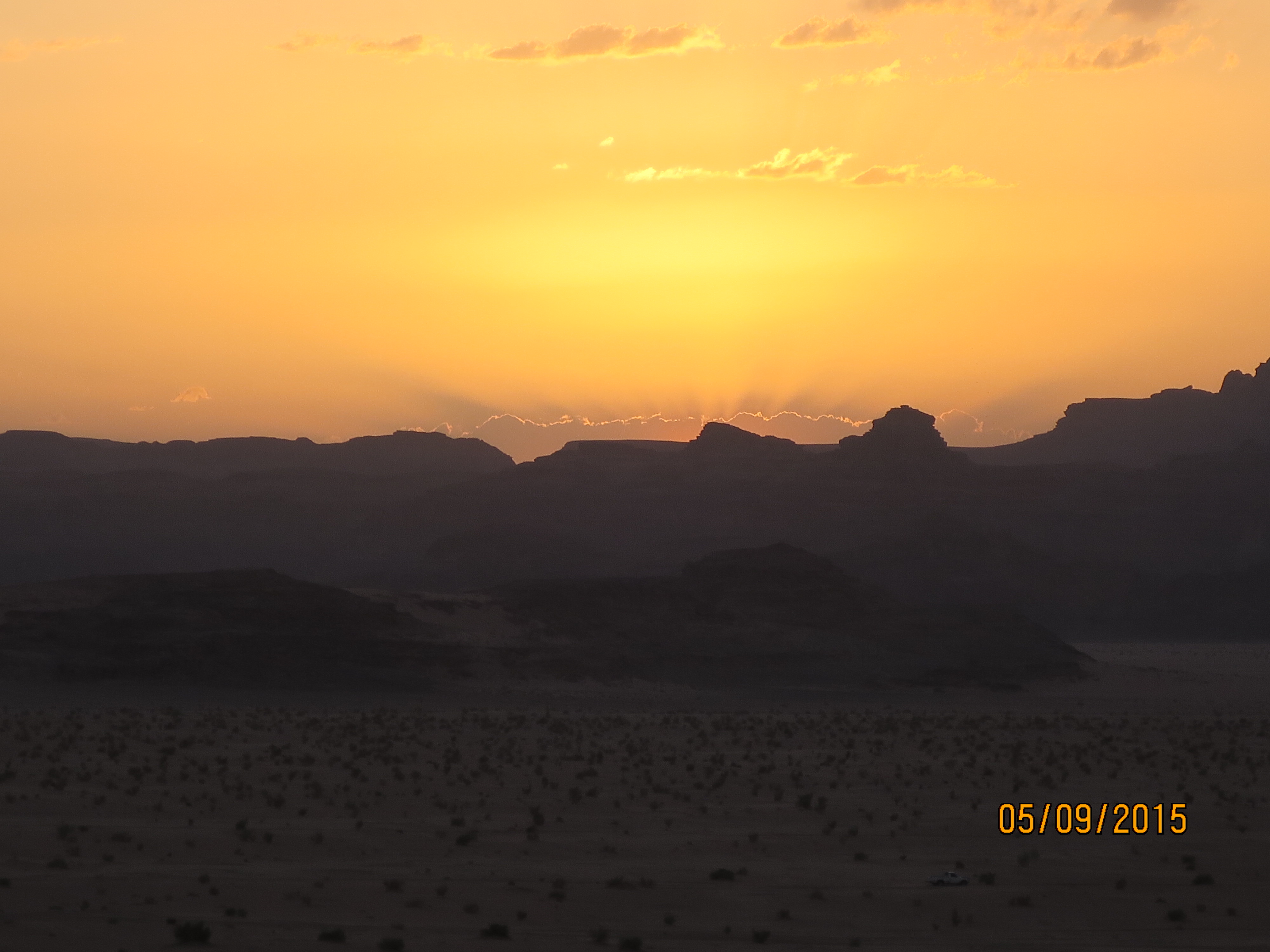
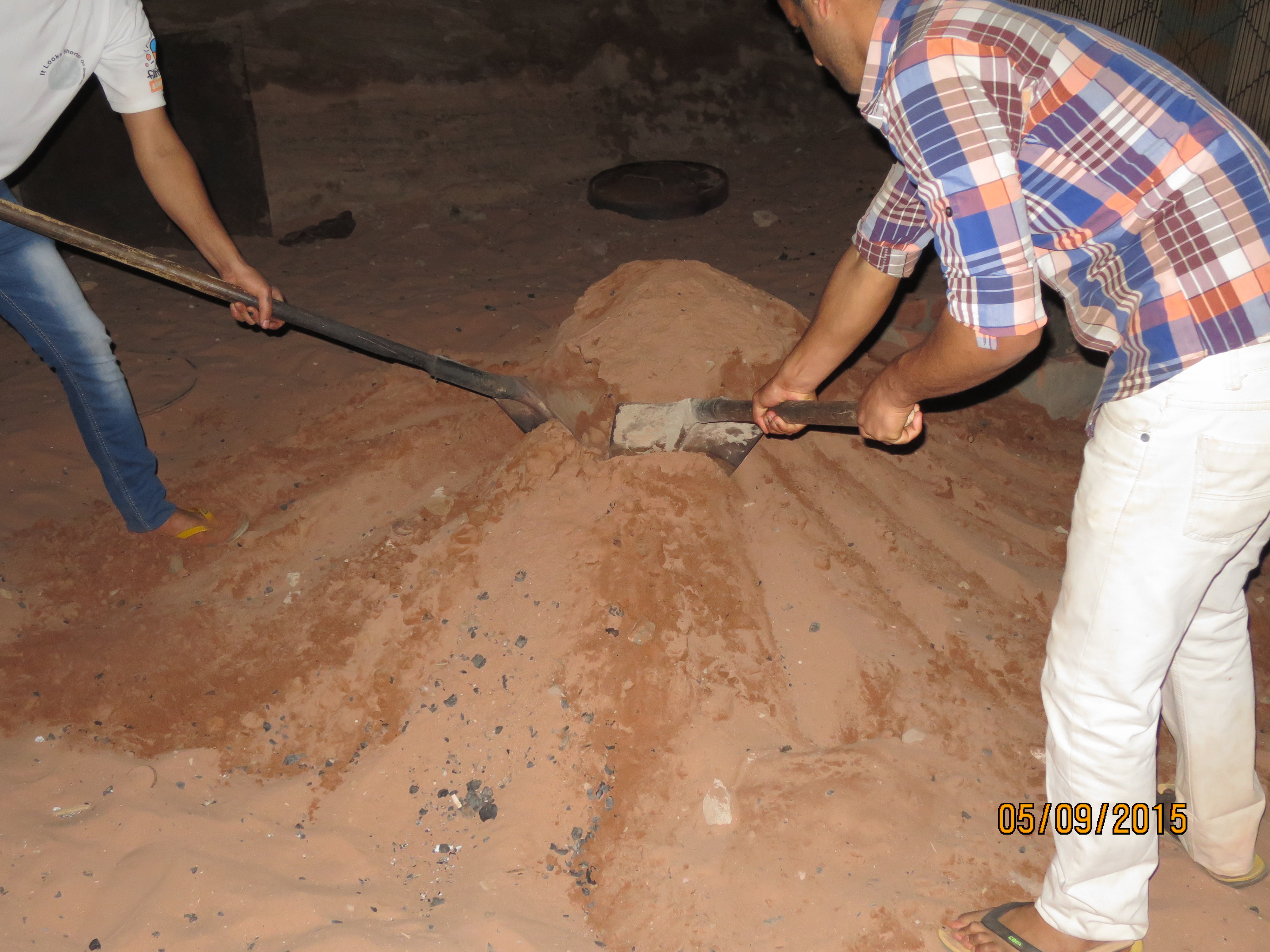
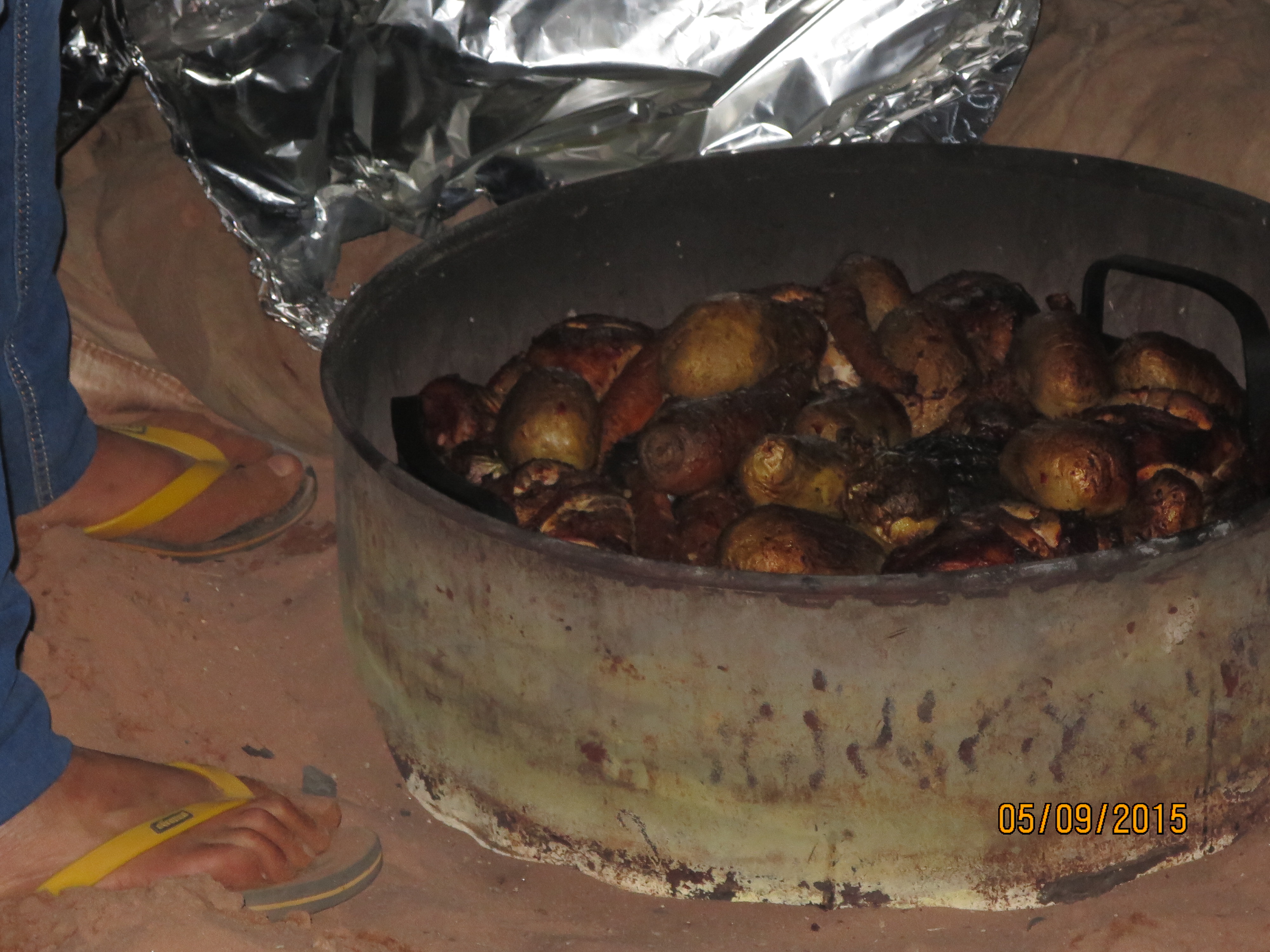
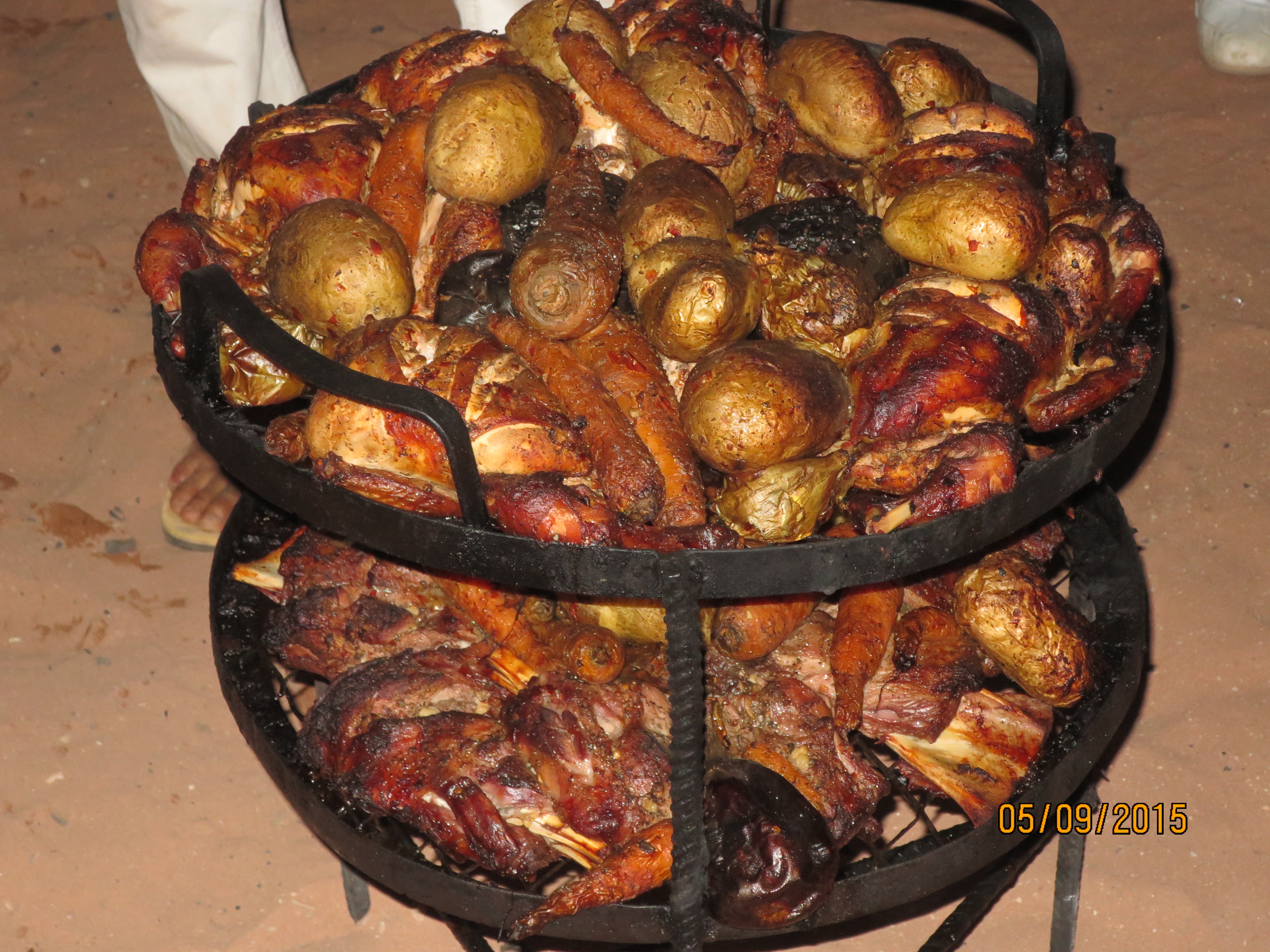
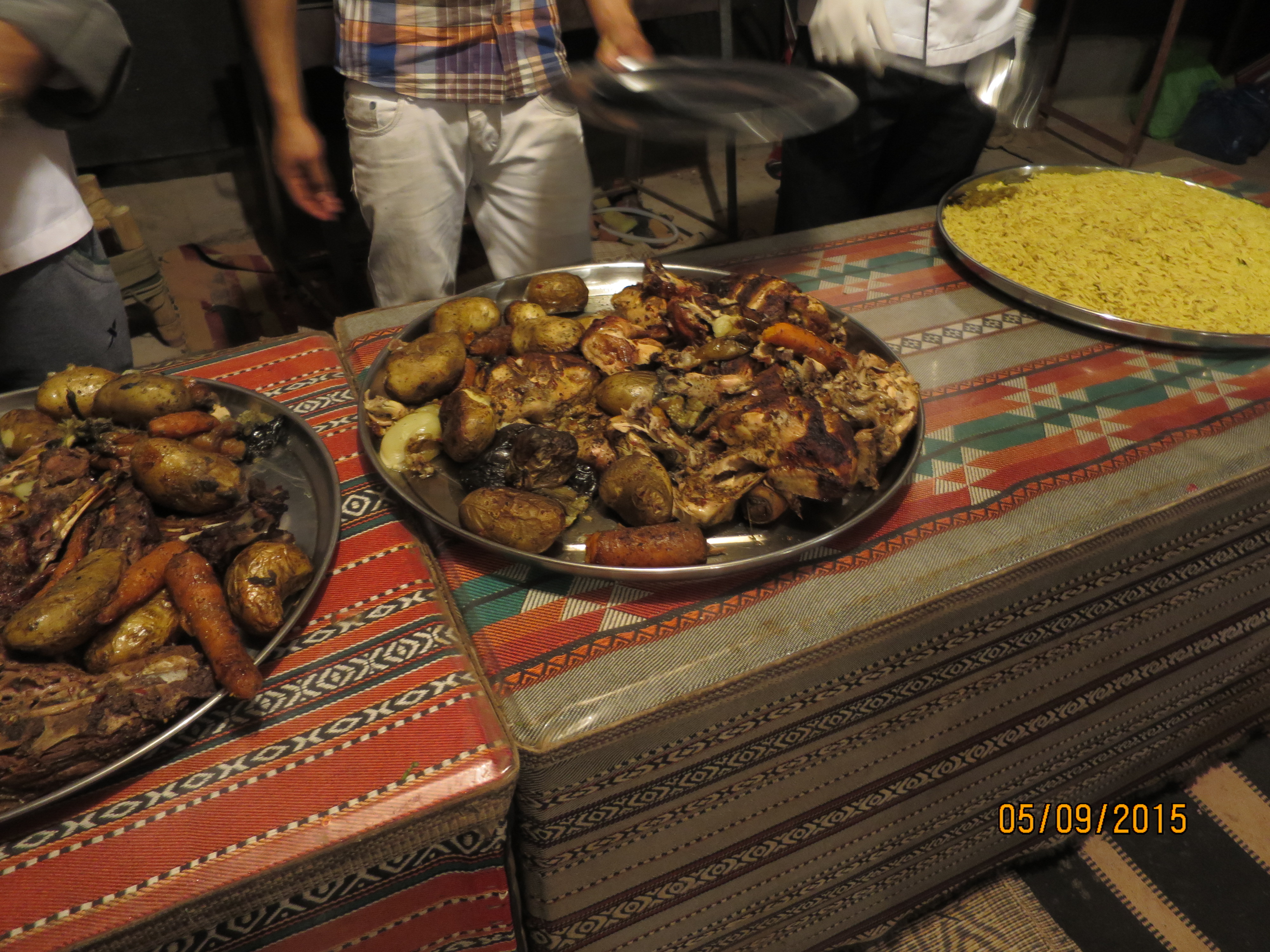
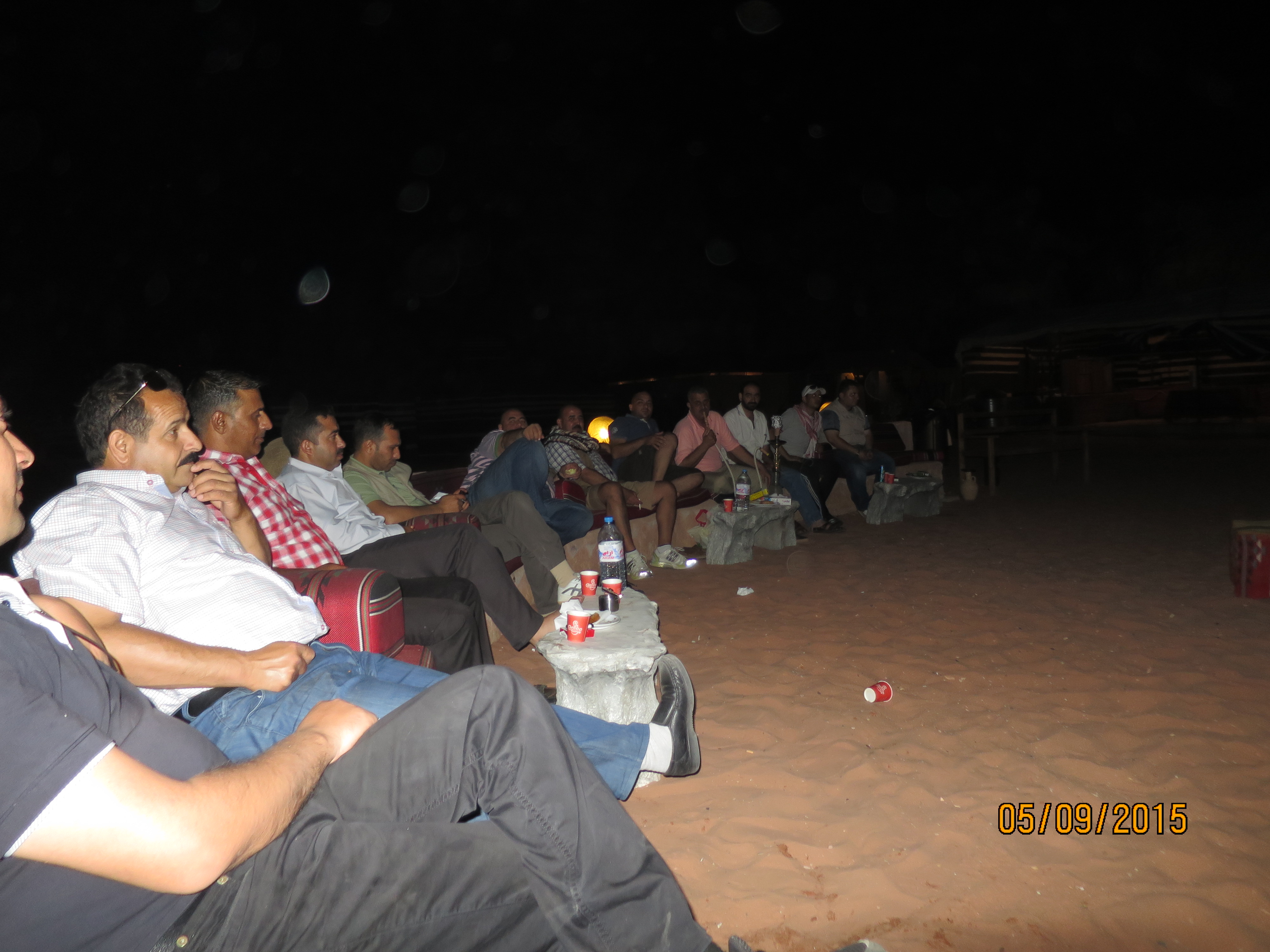
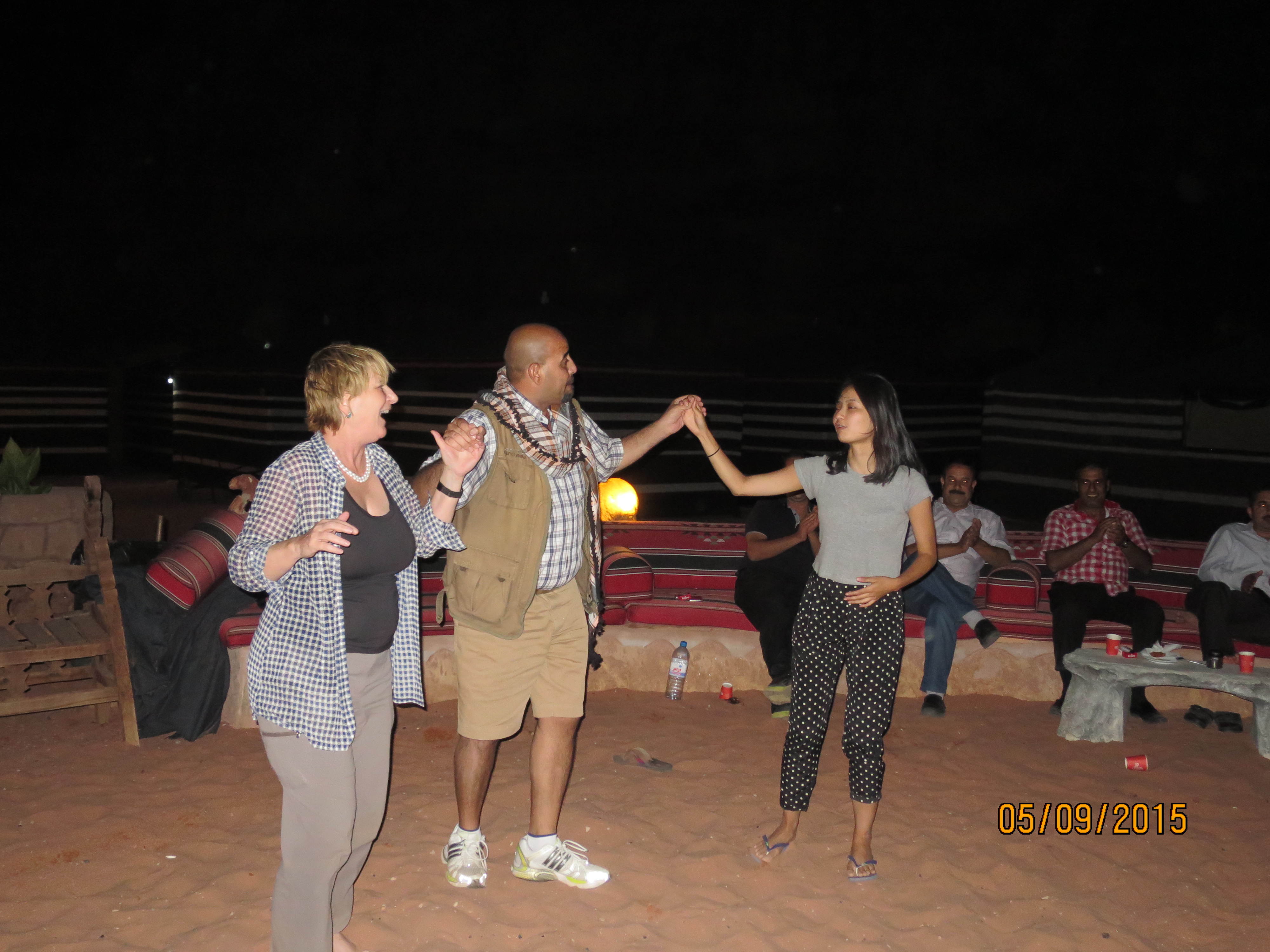
One of the interesting features is the findings of 25,000 rock carvings with 20,000 inscription that can trace the evolution of human thought and the early development of the alphabet going back 12,000 years from the people who lived in this harsh environment.
amazing. I am going to see if I can find out more about that.
How did it feel to be in that vast unspoiled environment? I can’t imagine…seems like you would feel like you were the only few left on the planet…!
Thanks again Bob and Mary Elaine:)